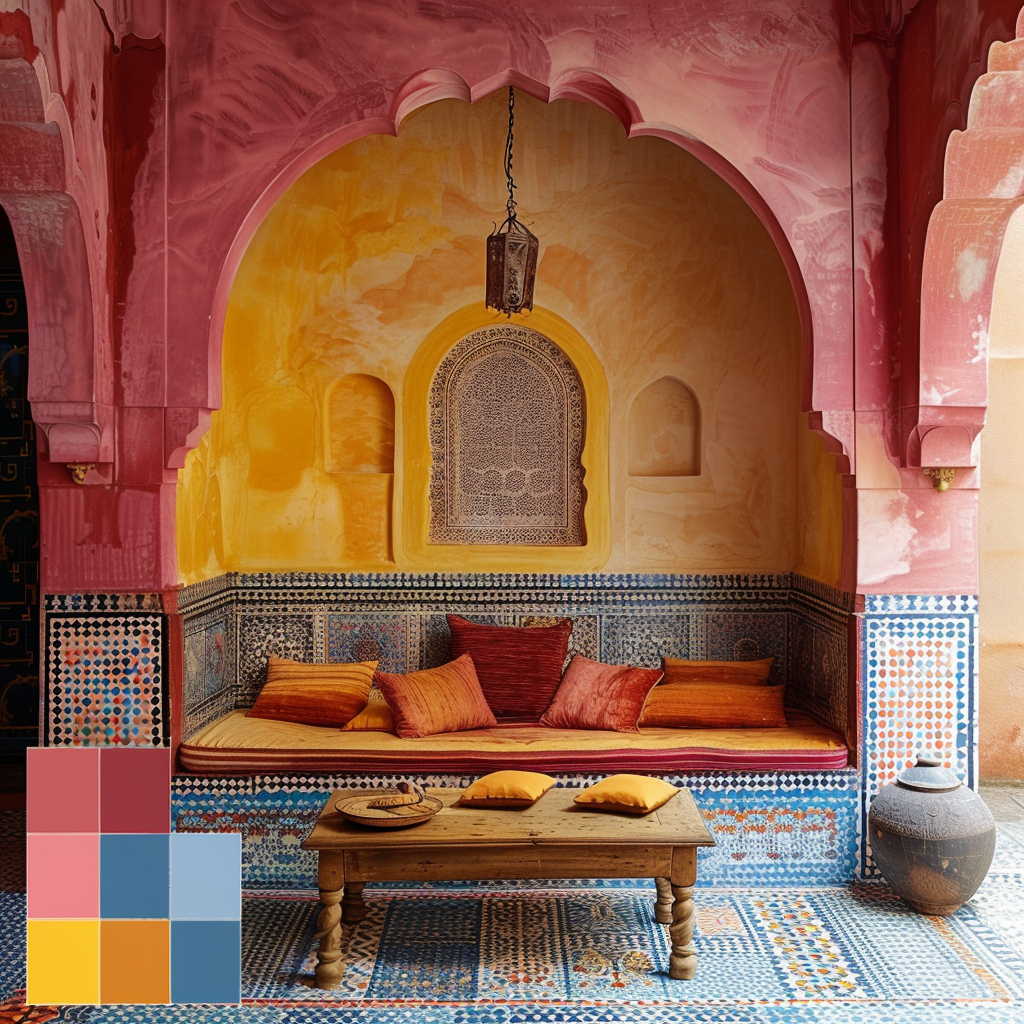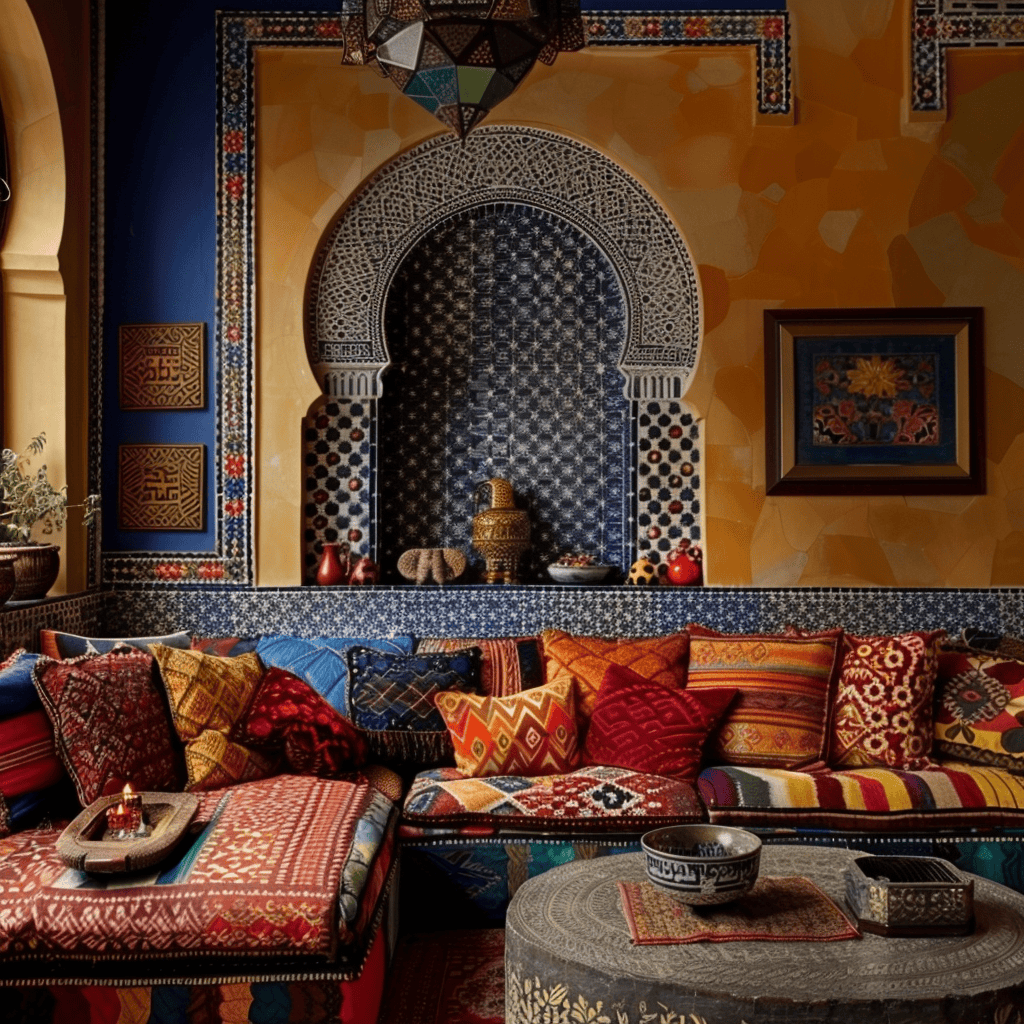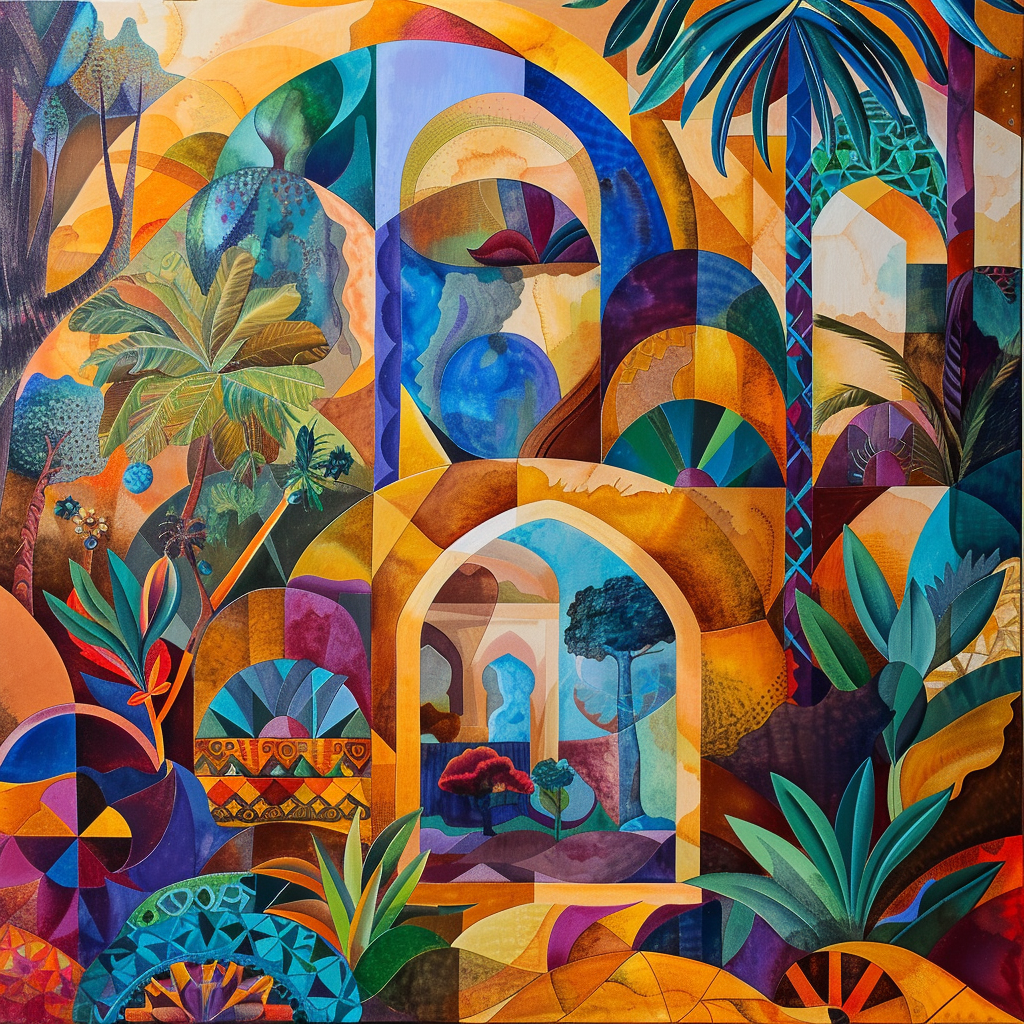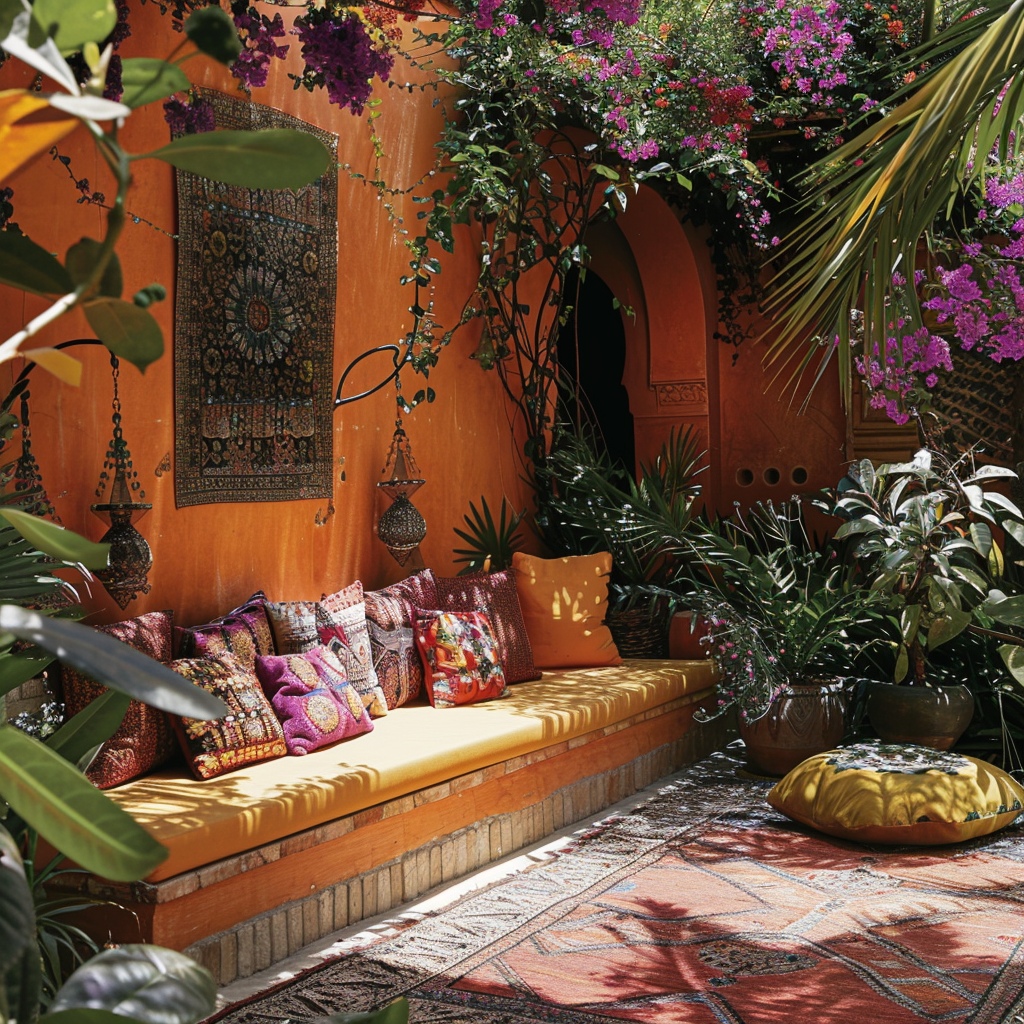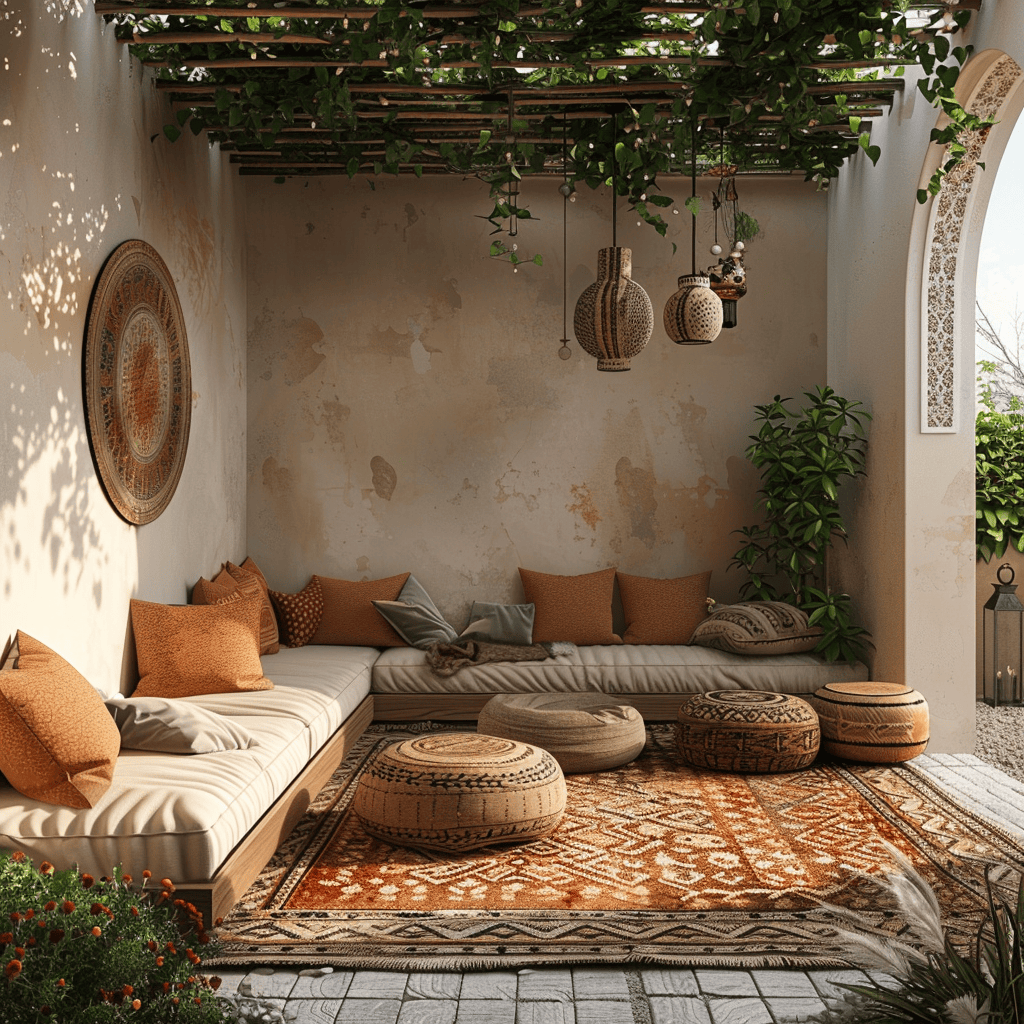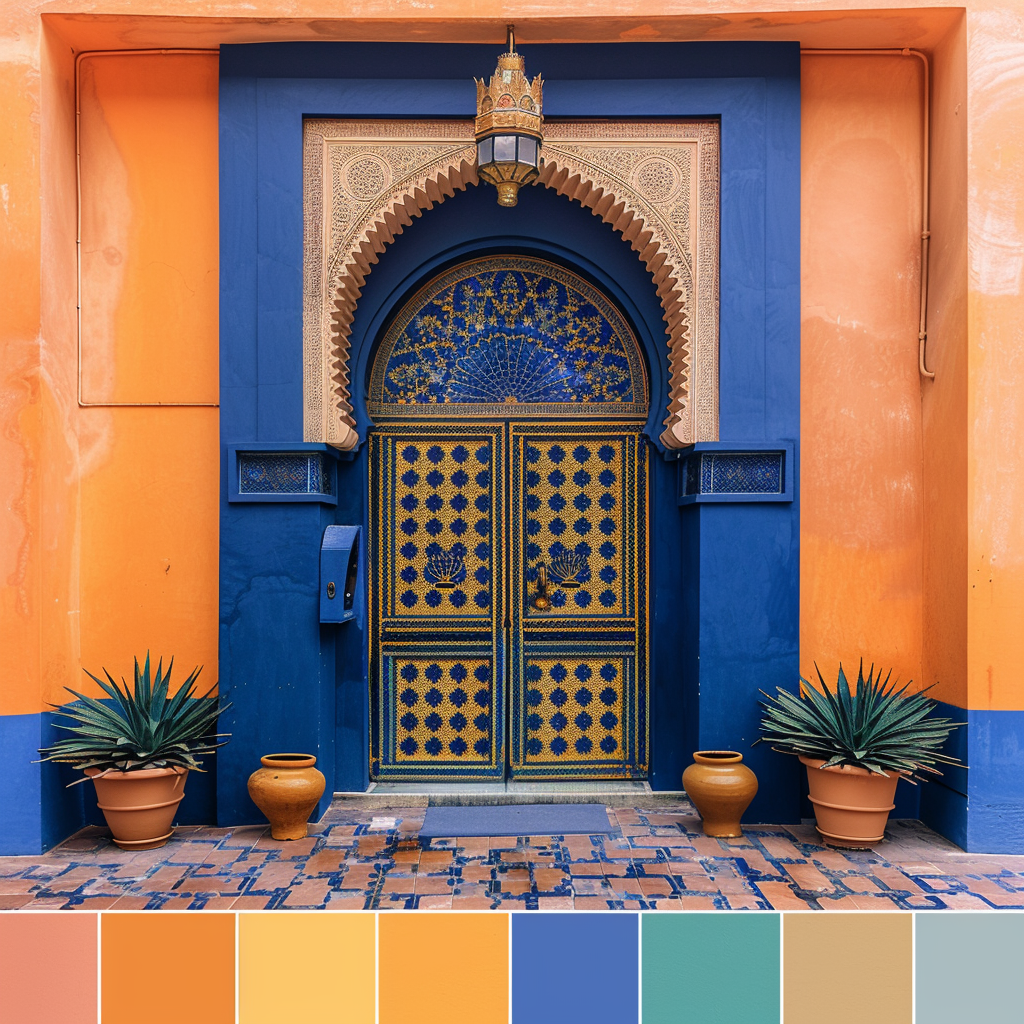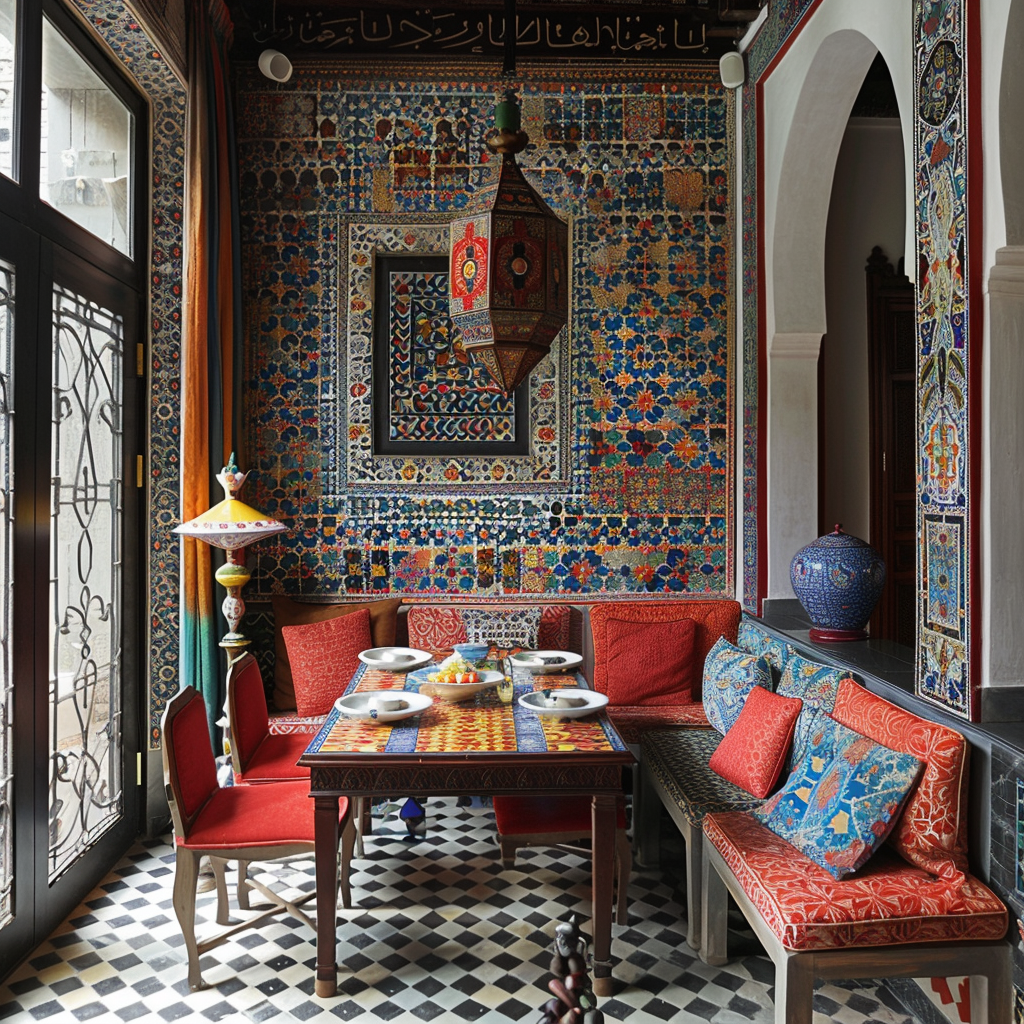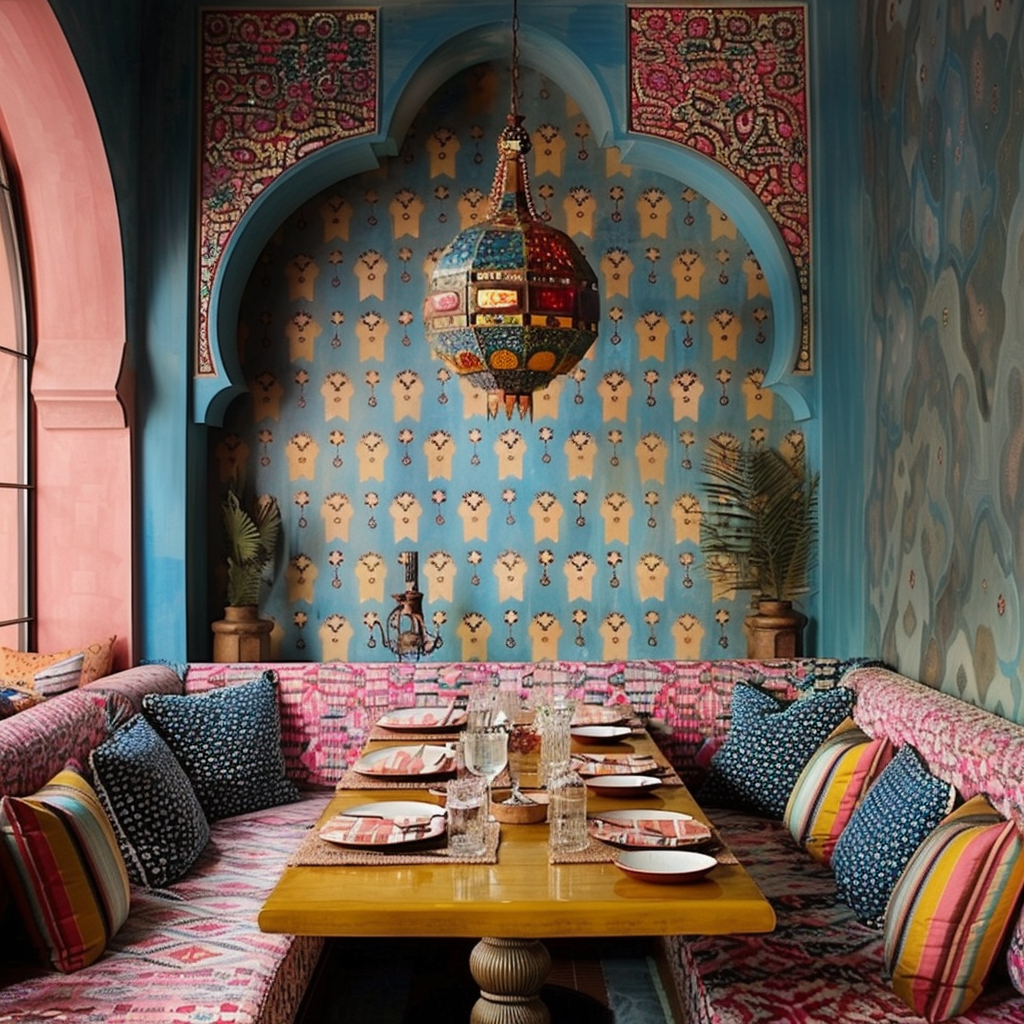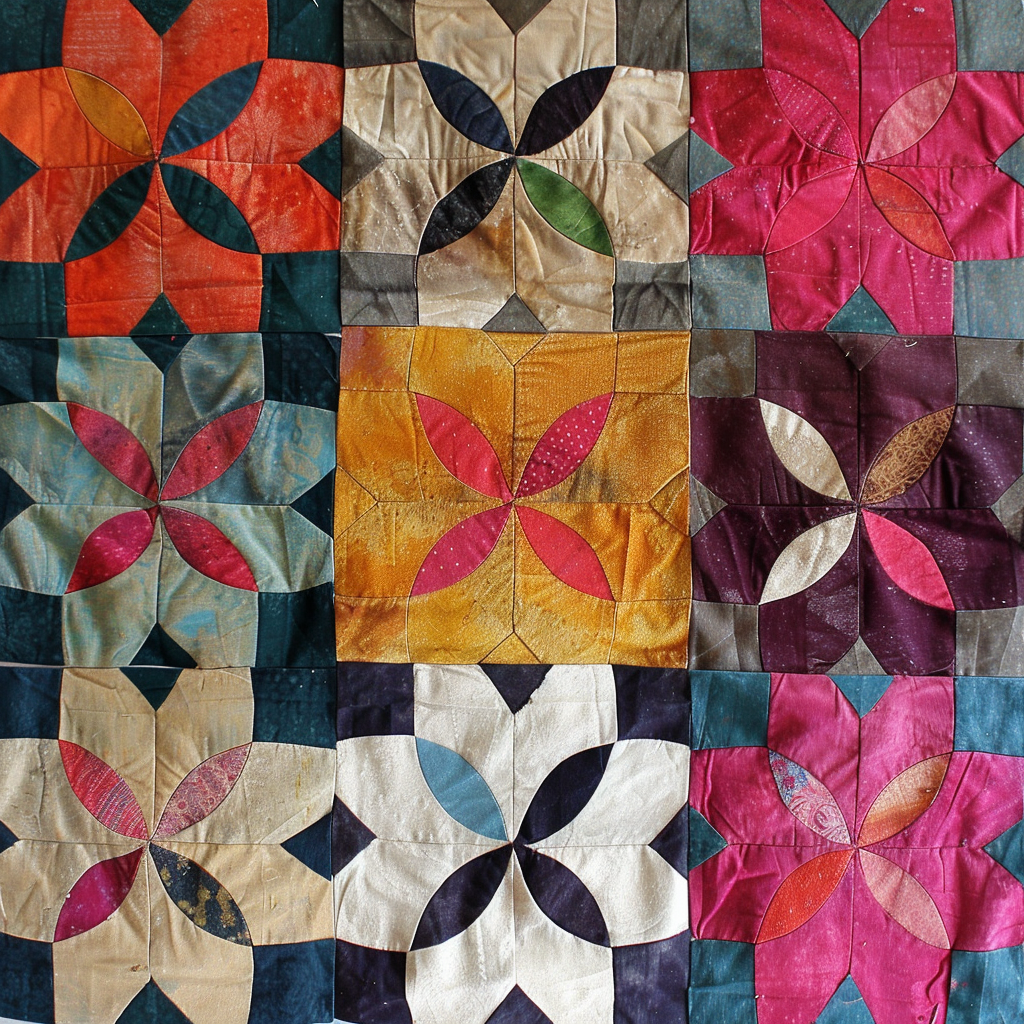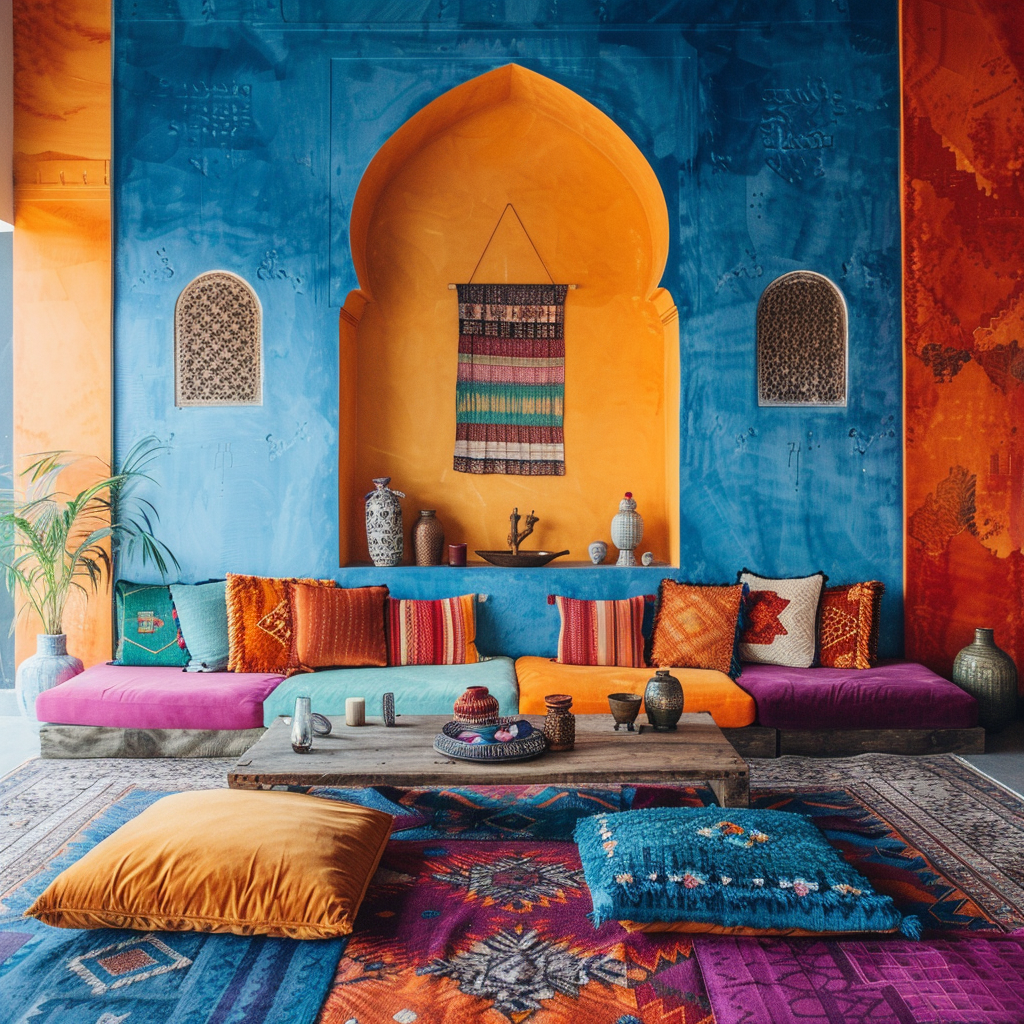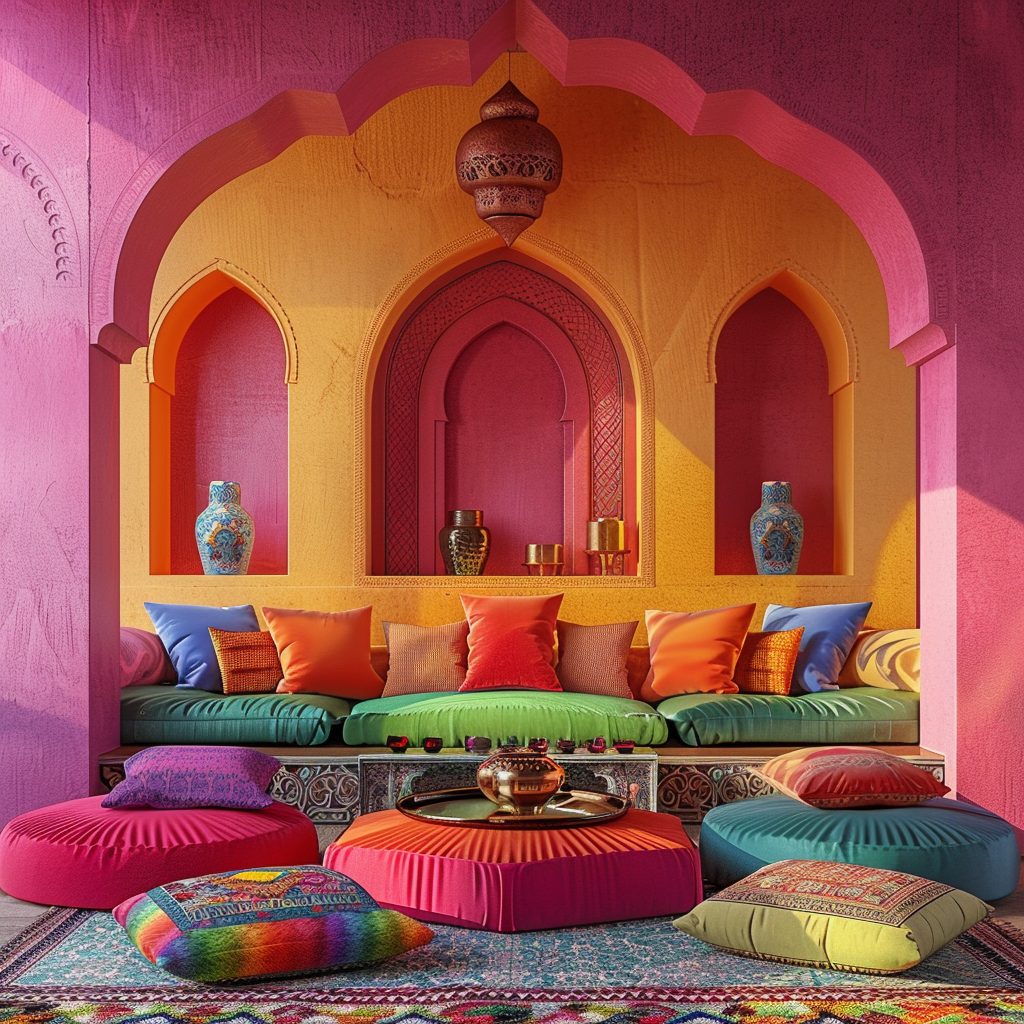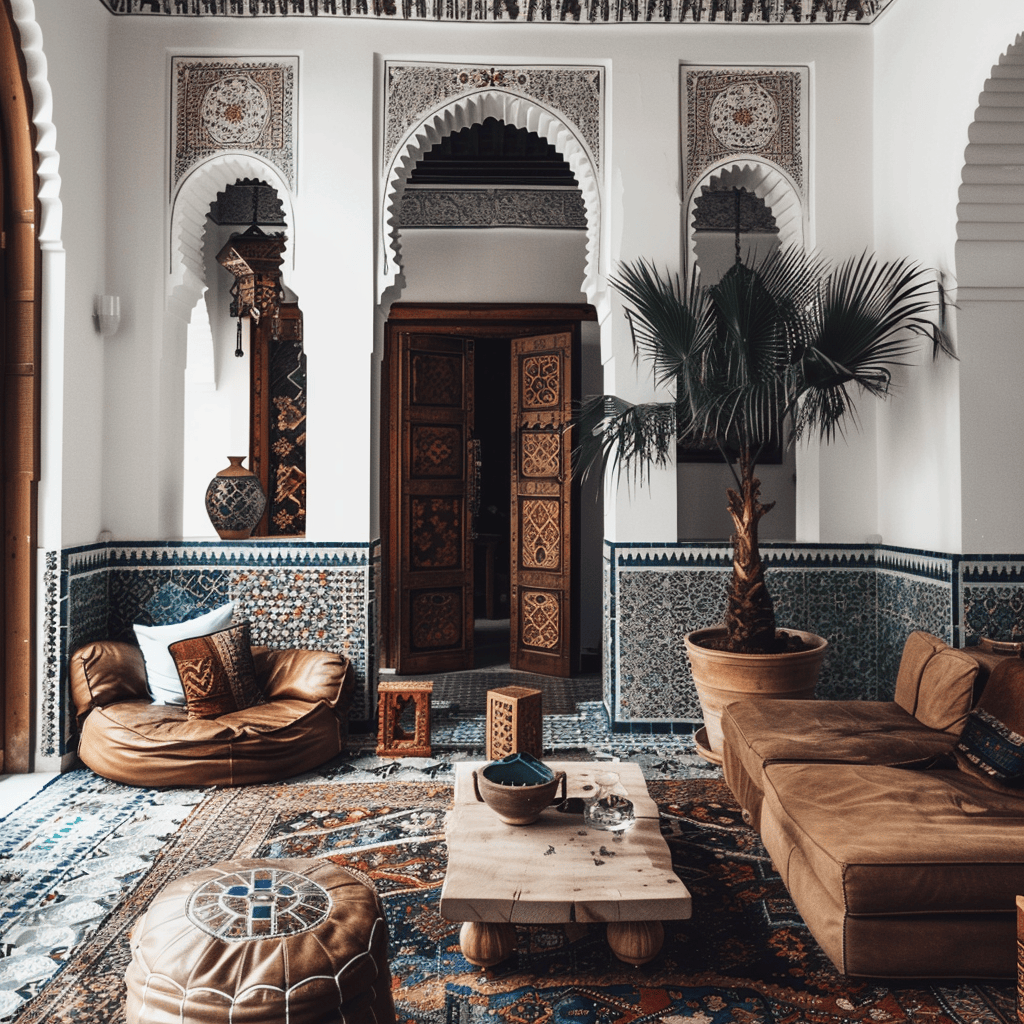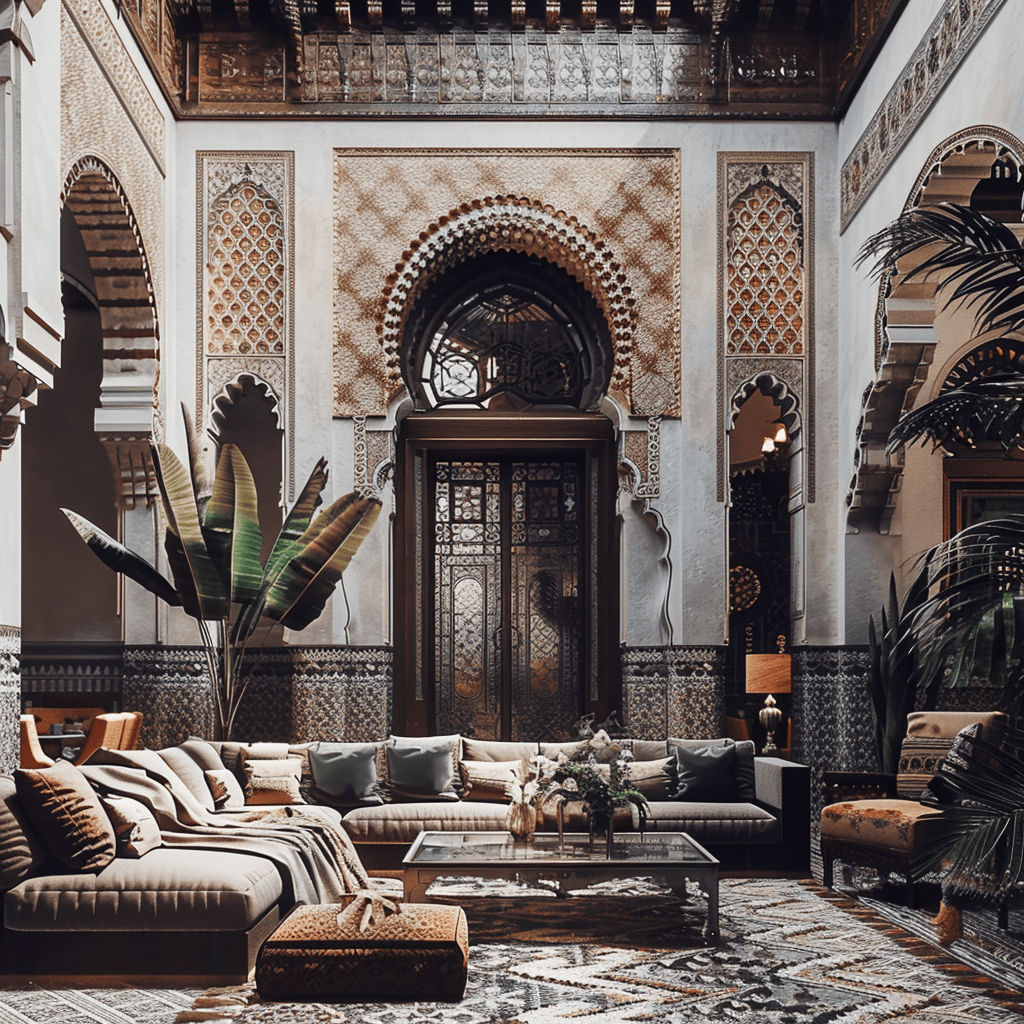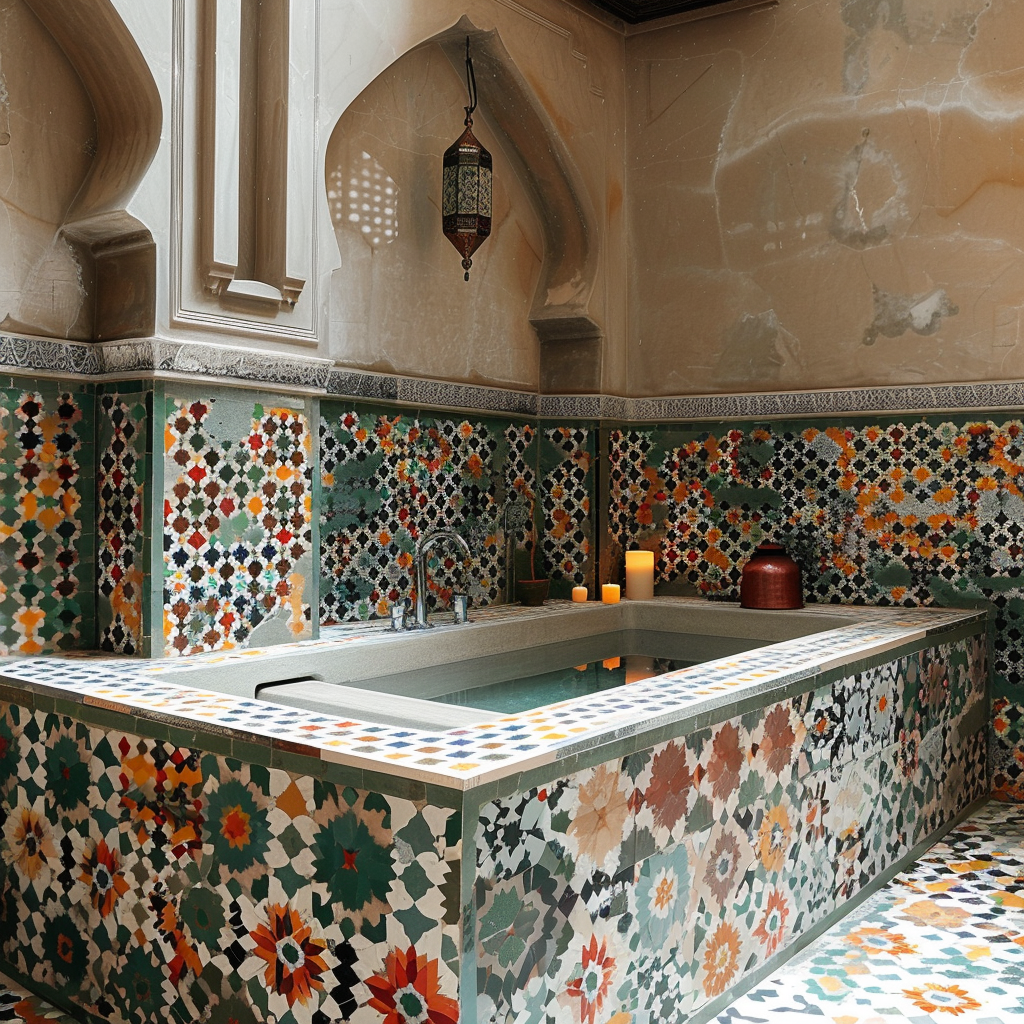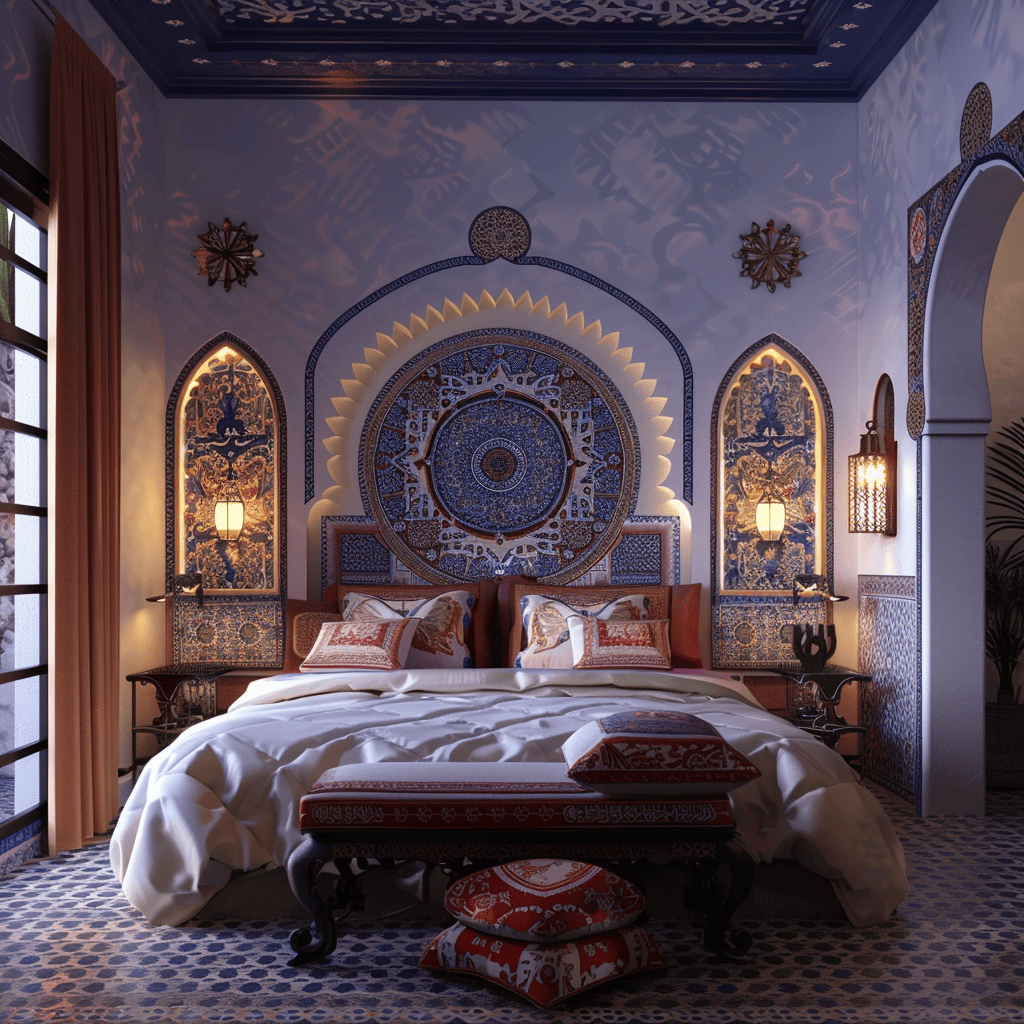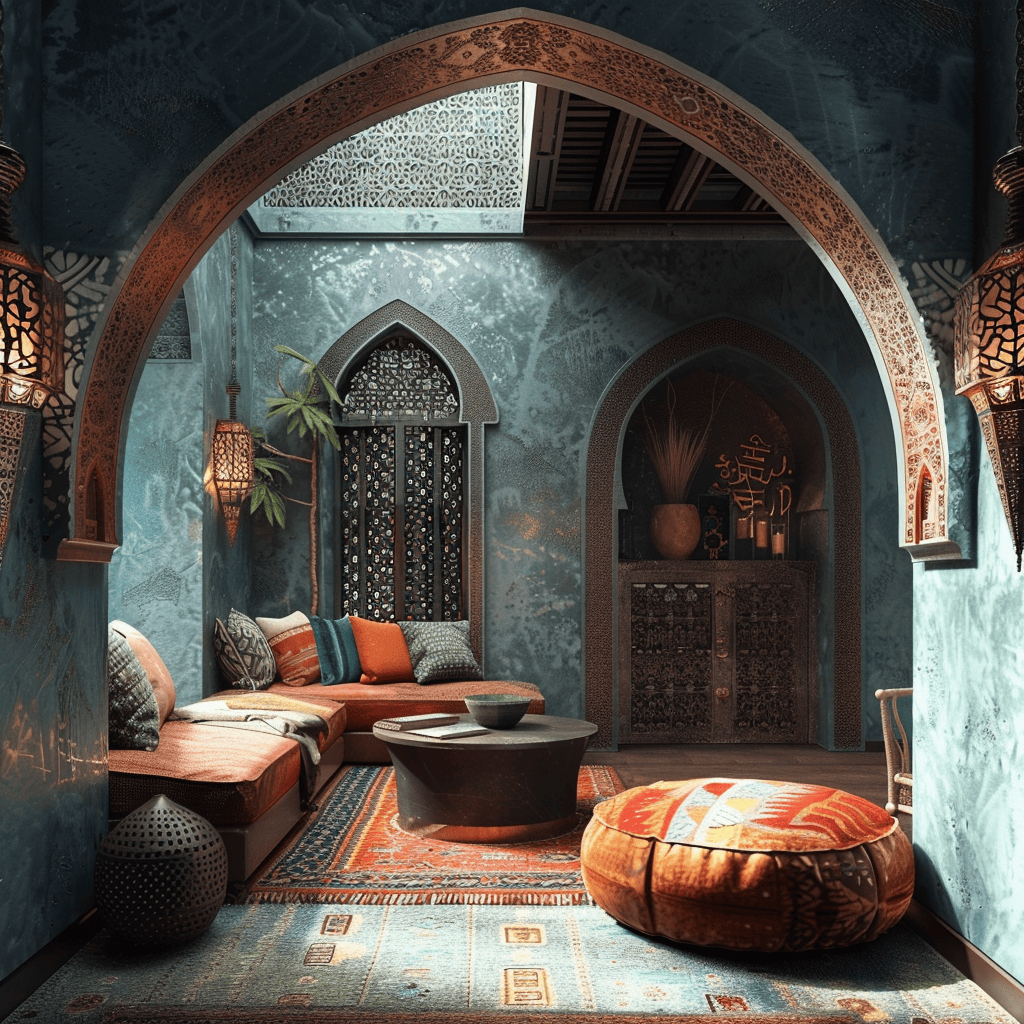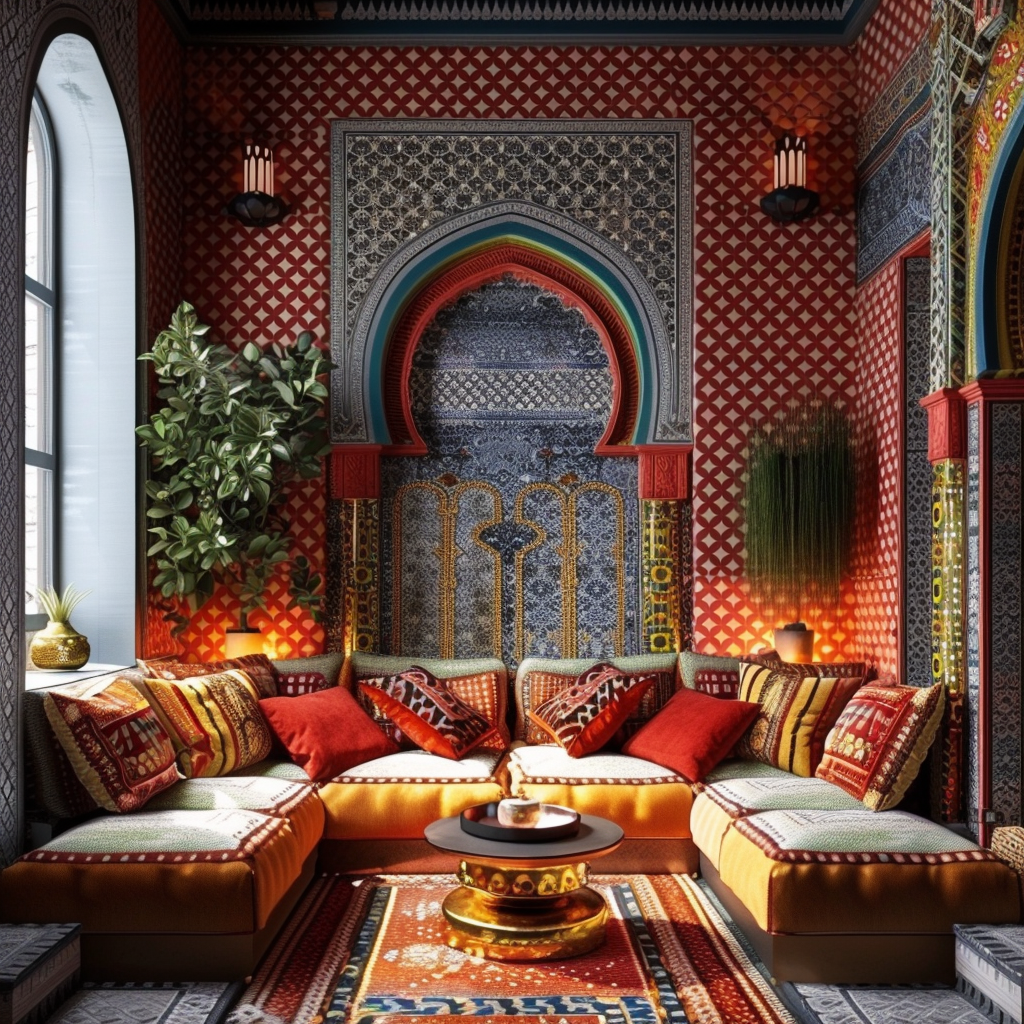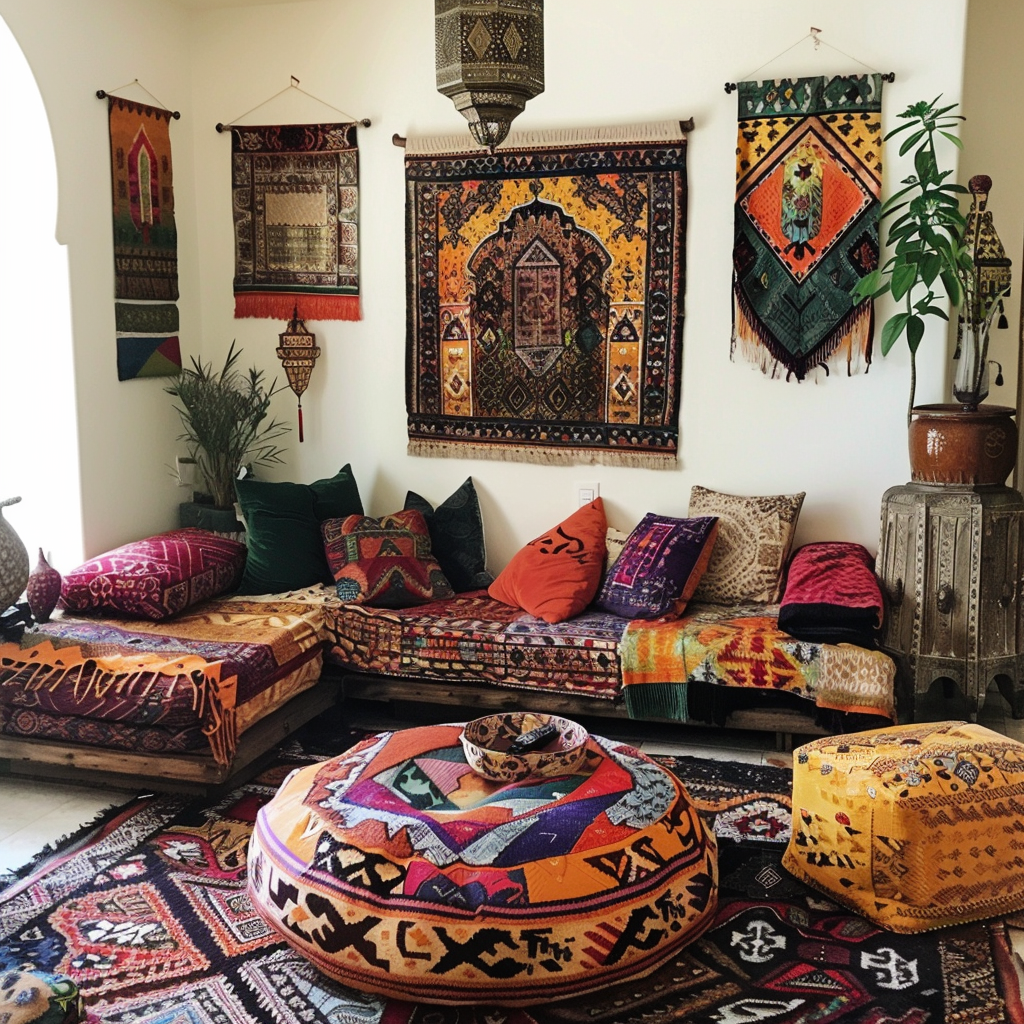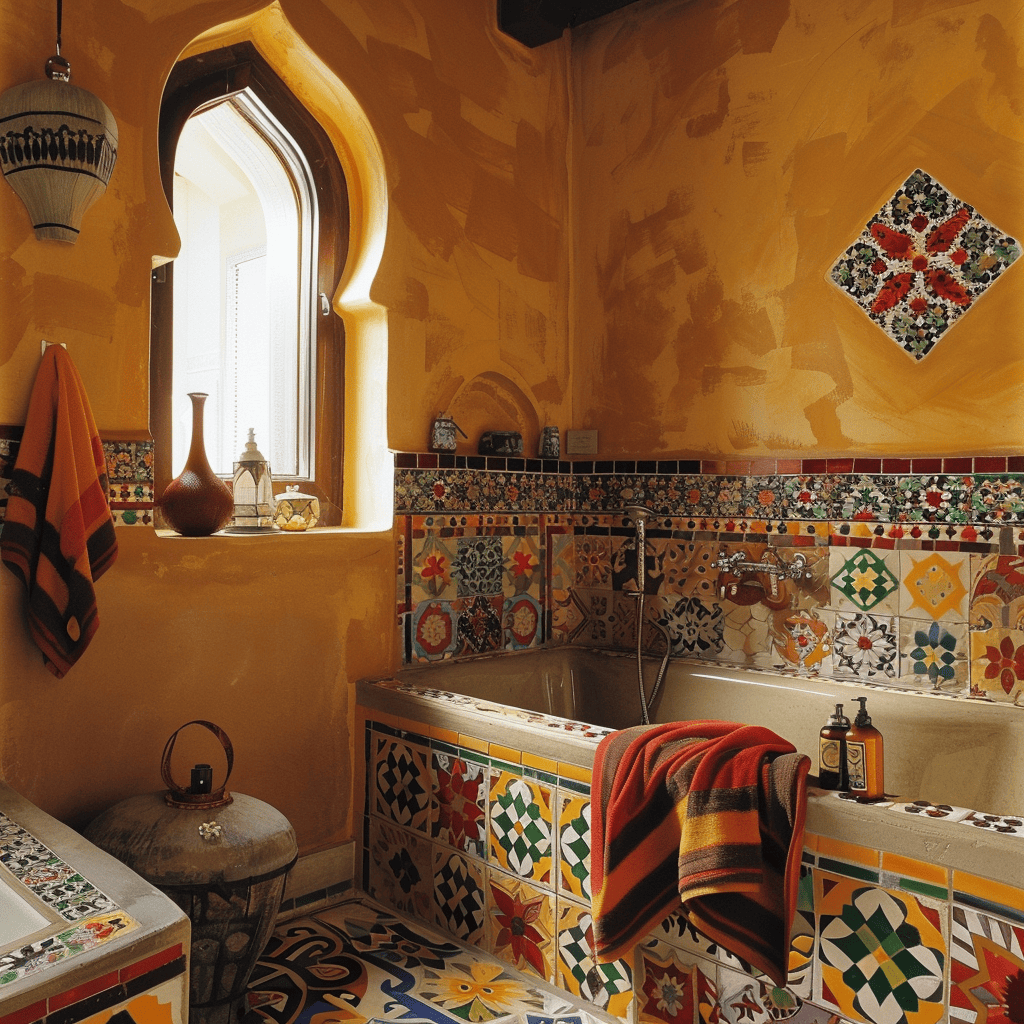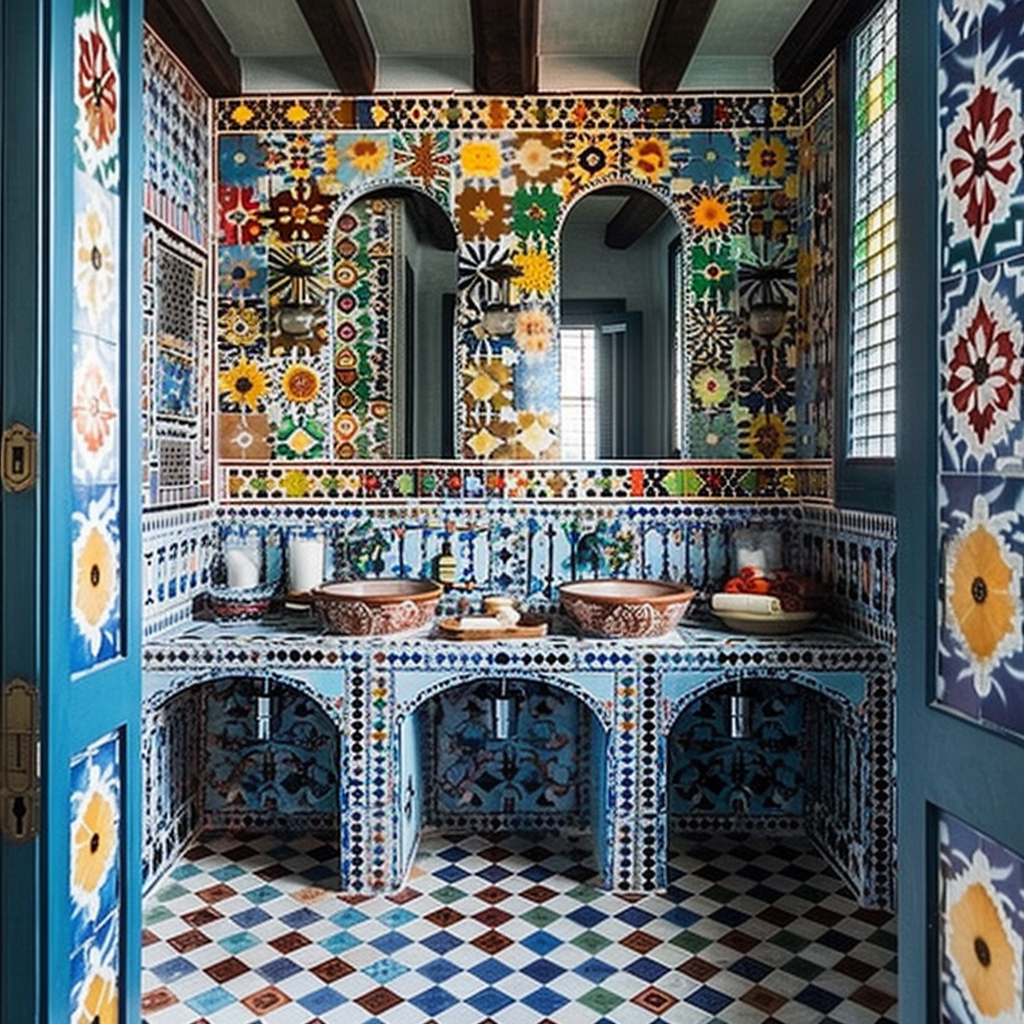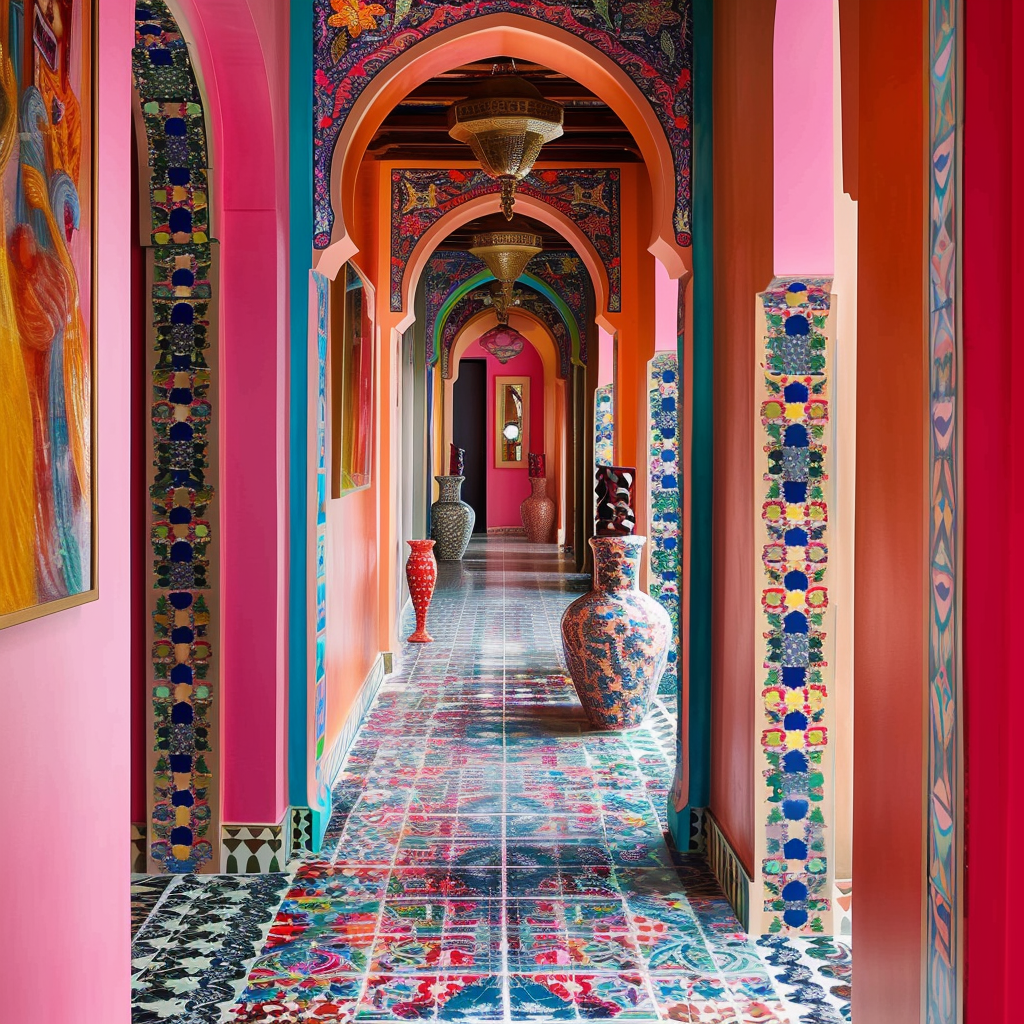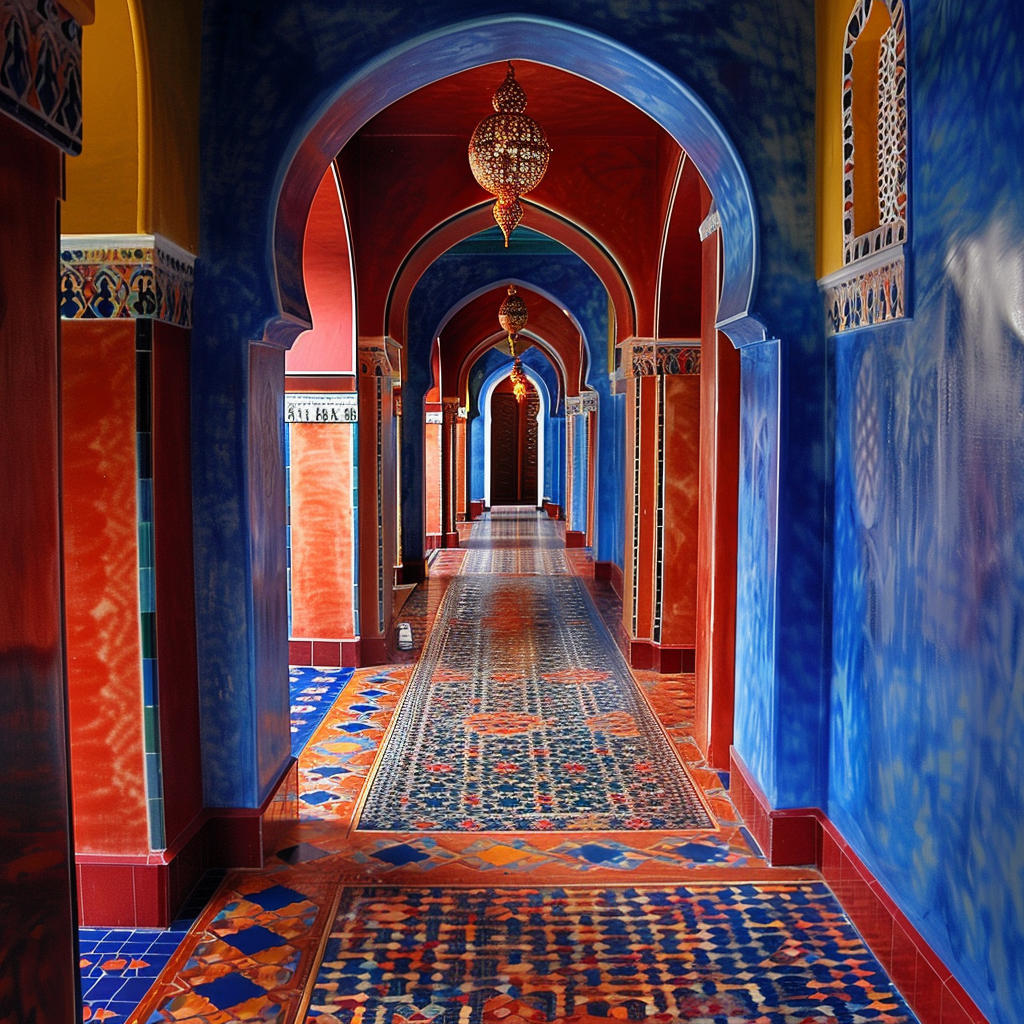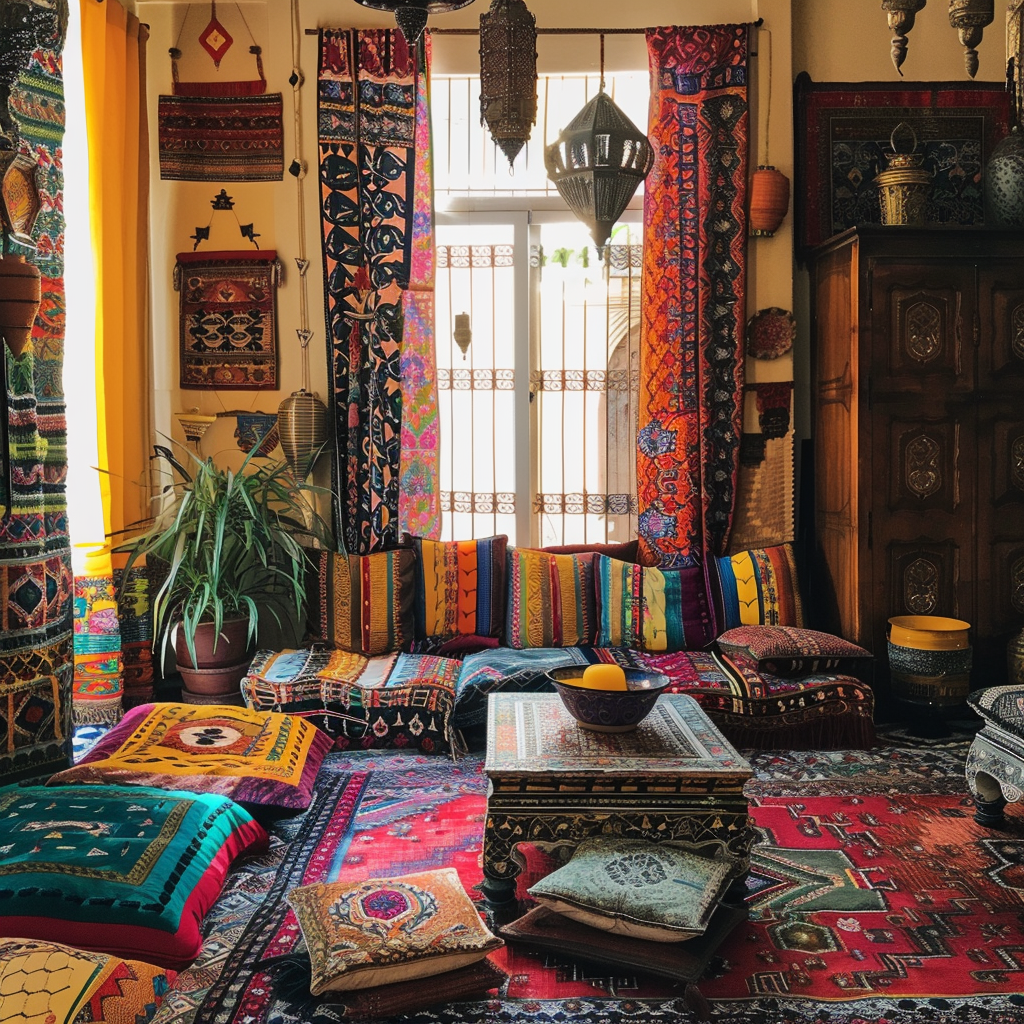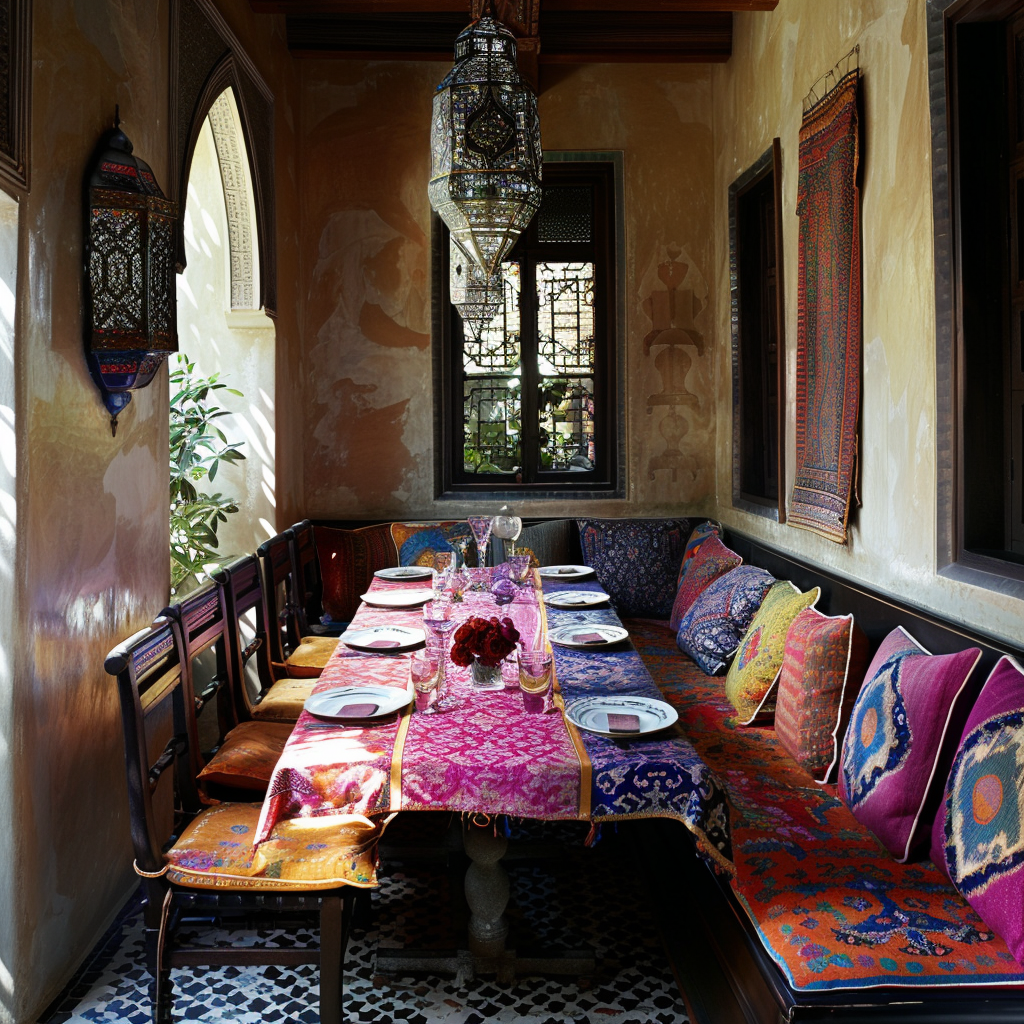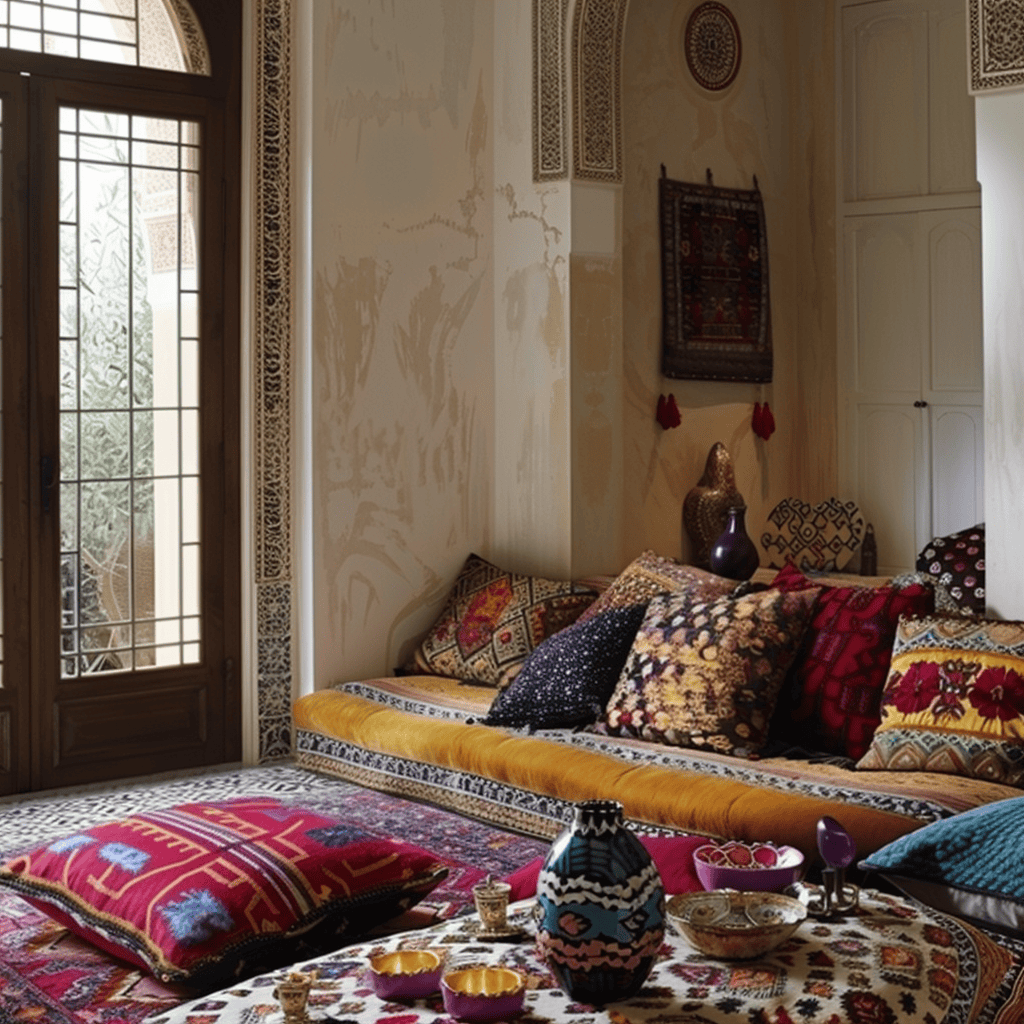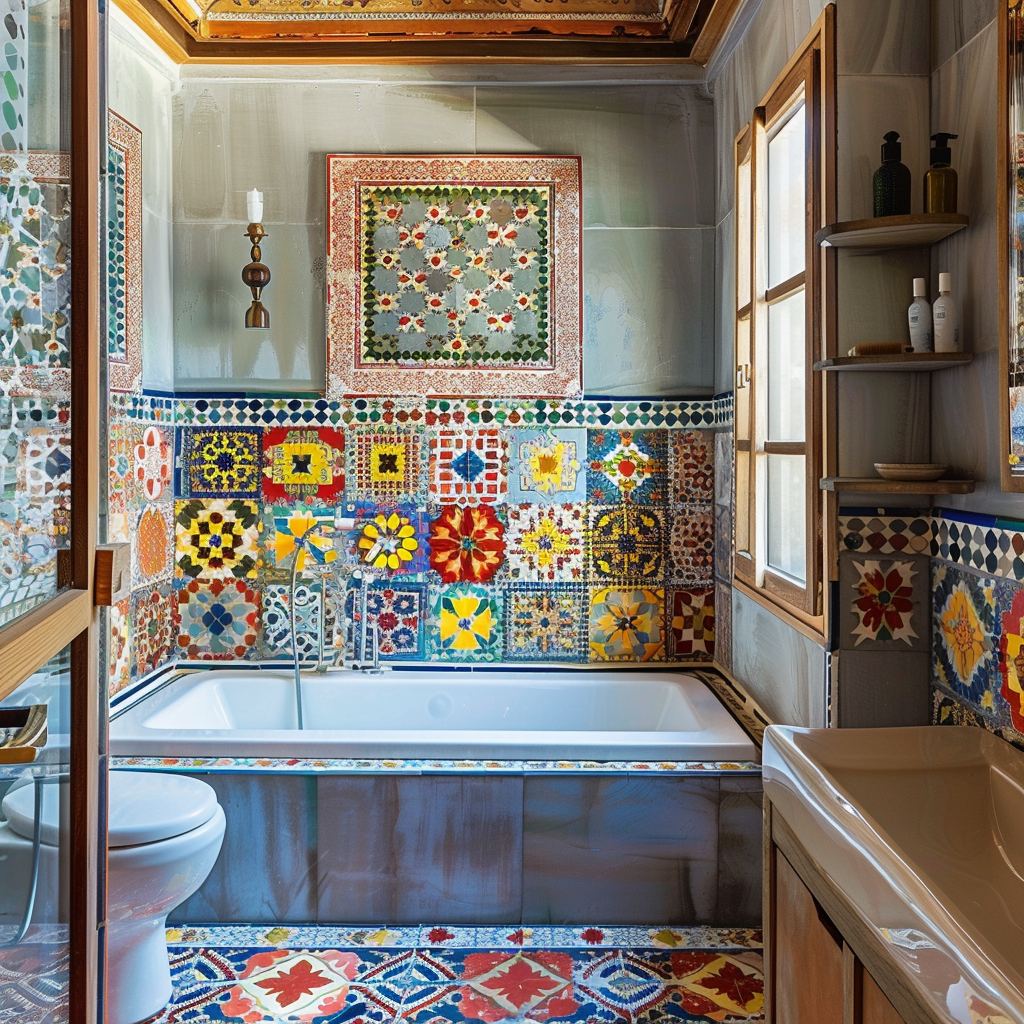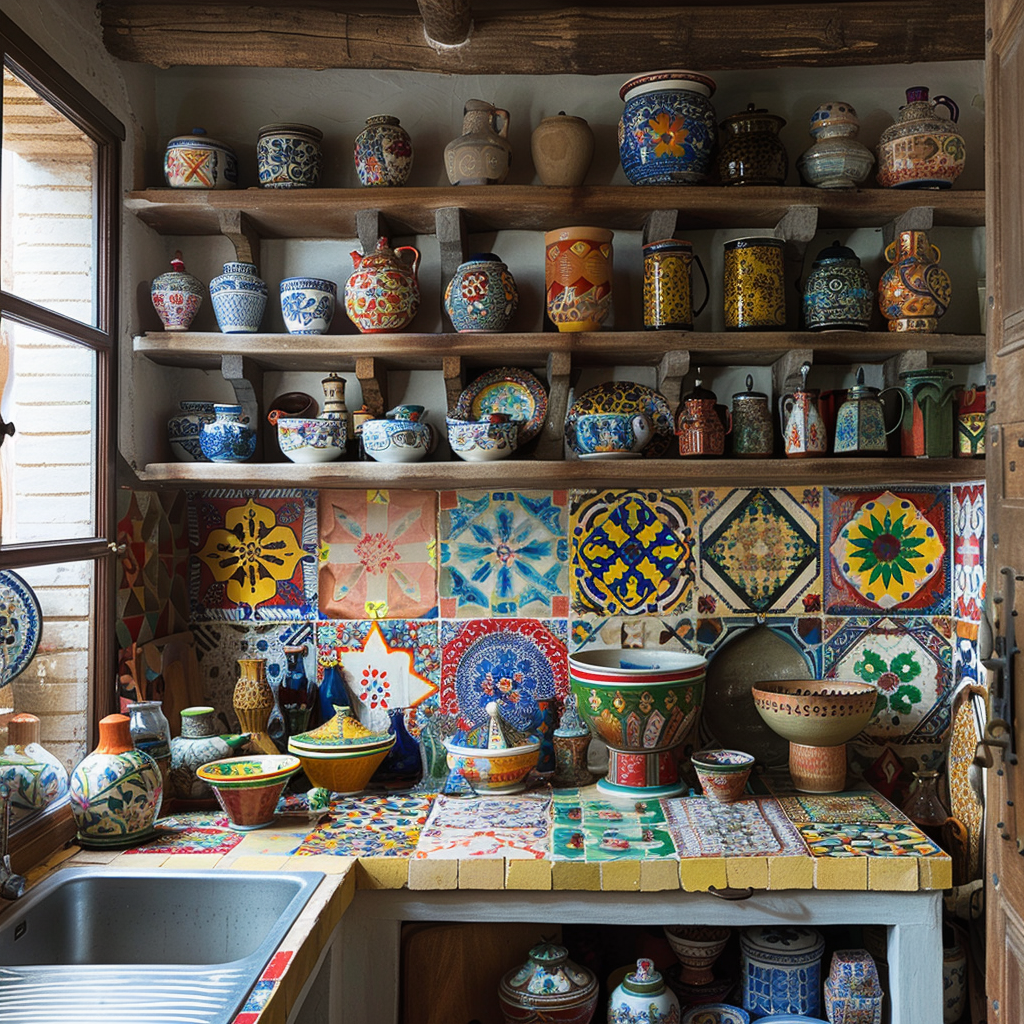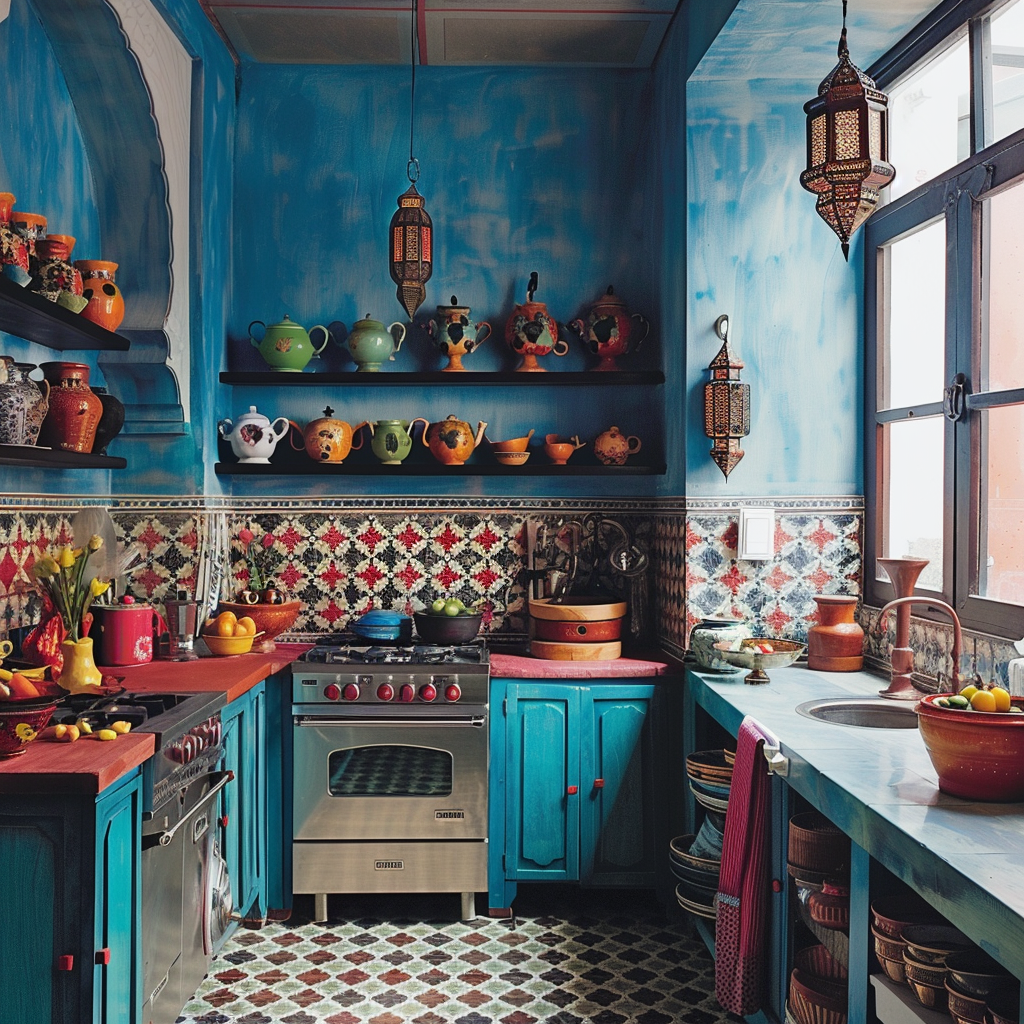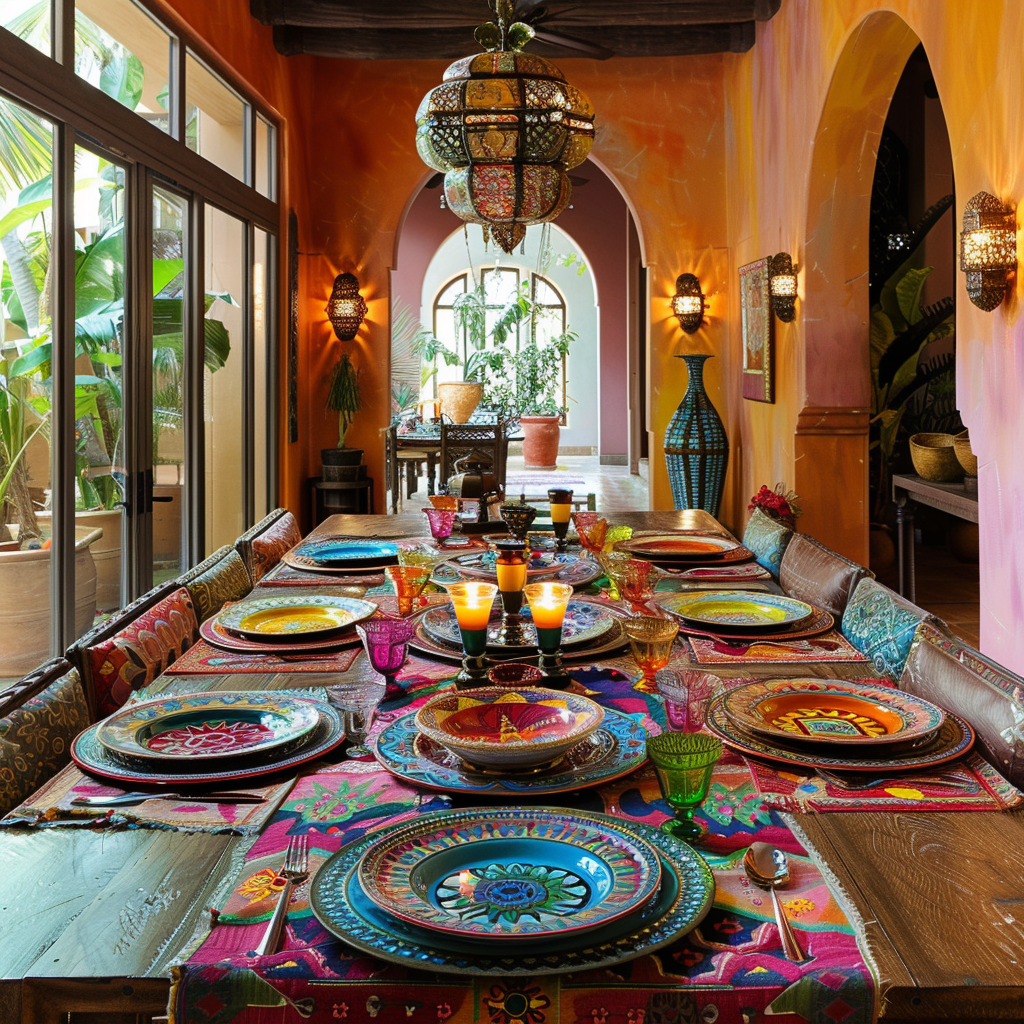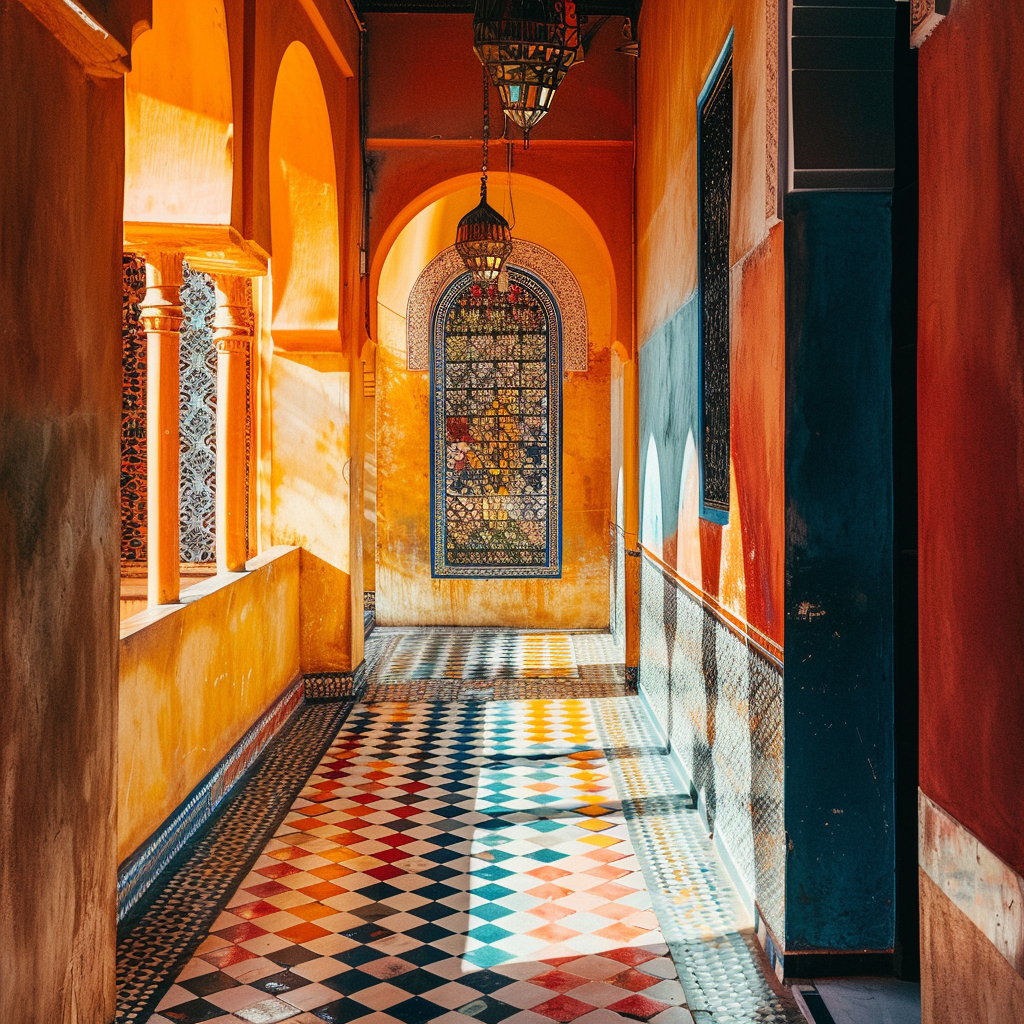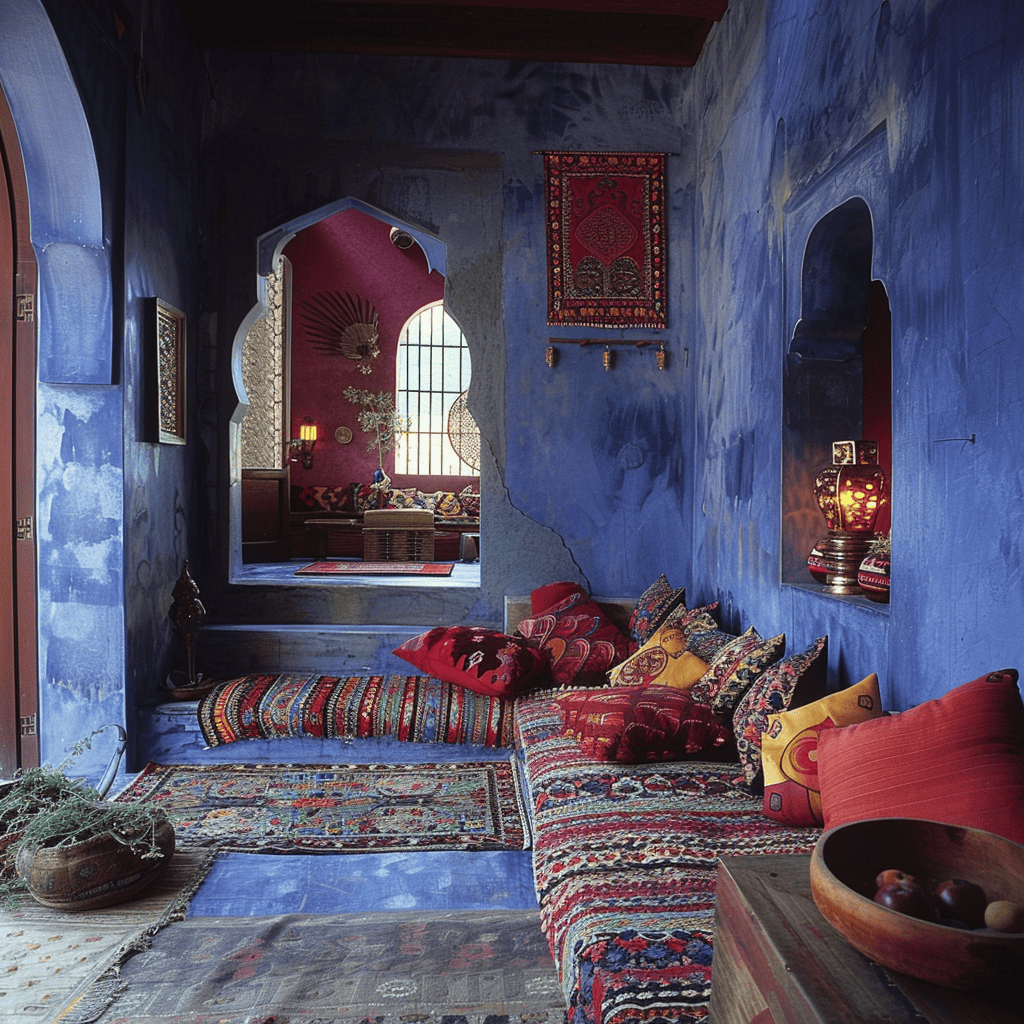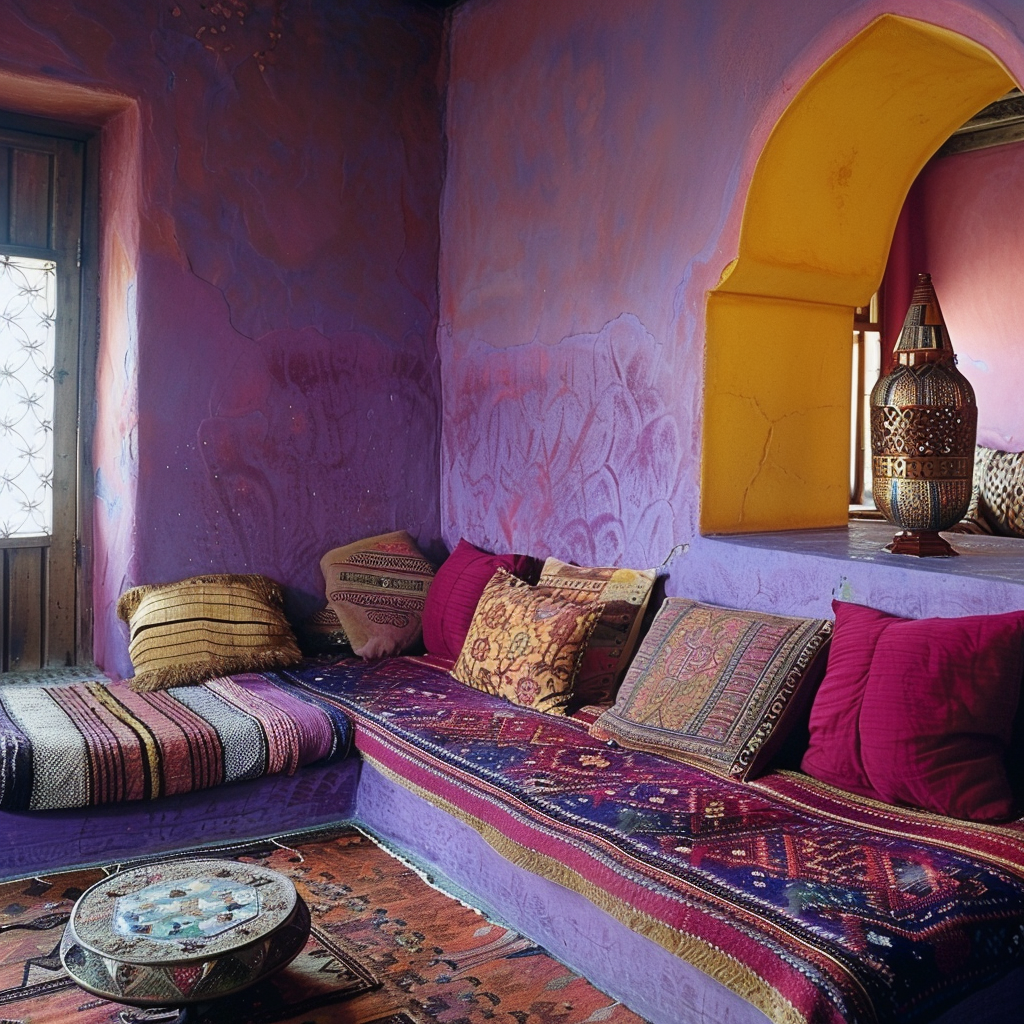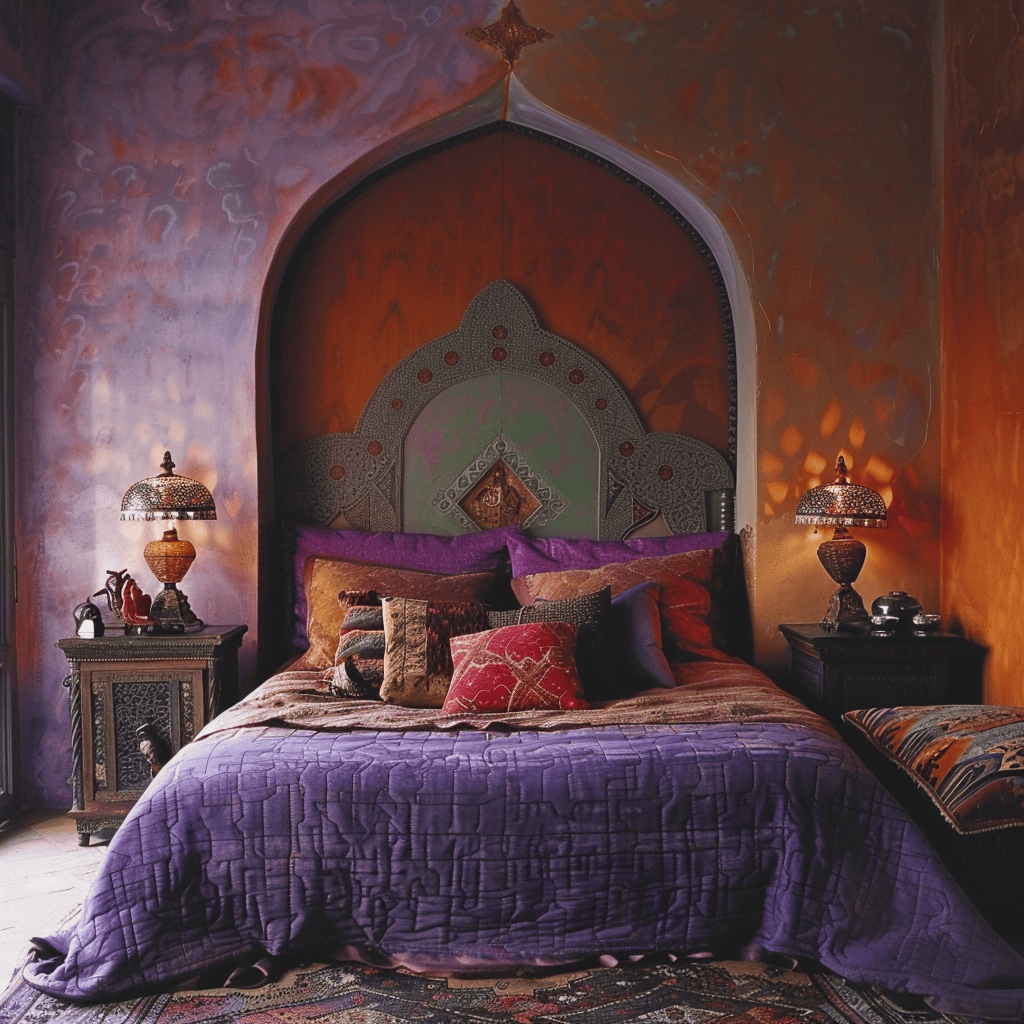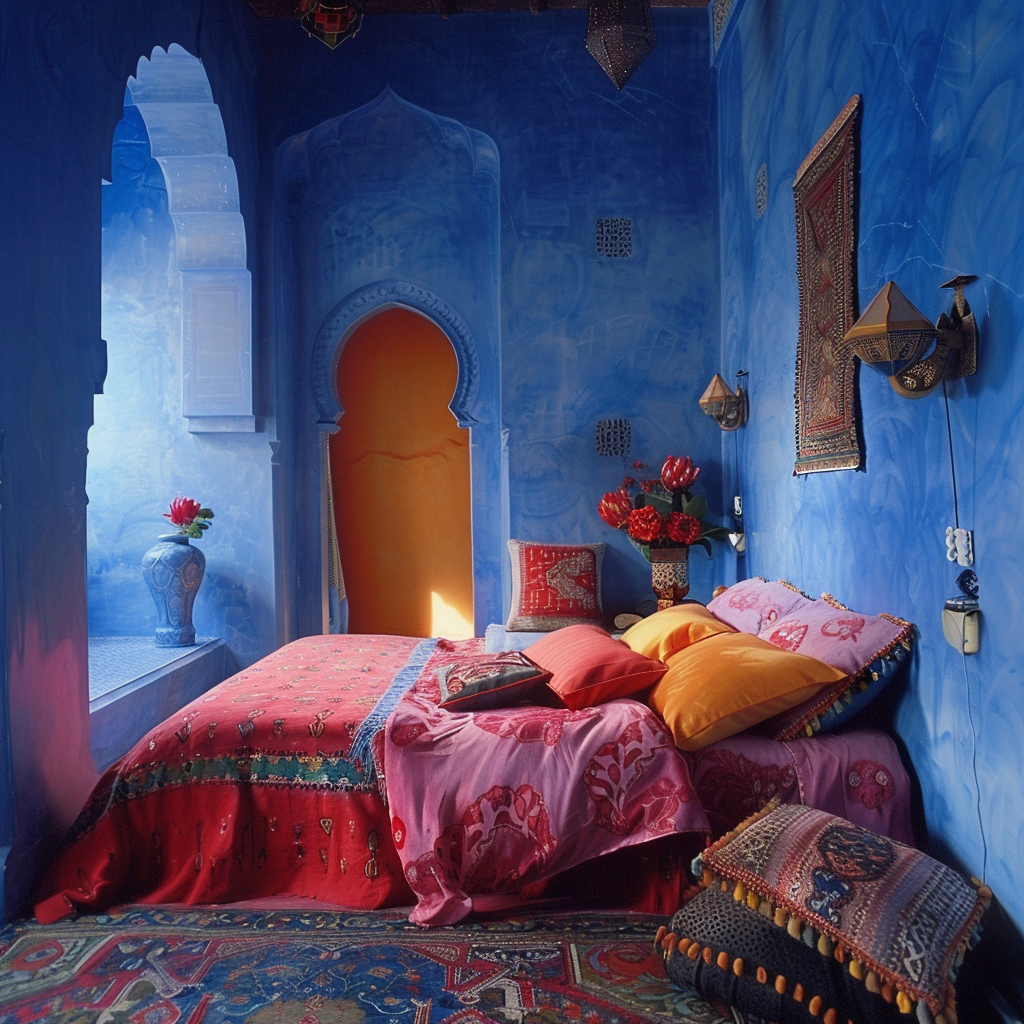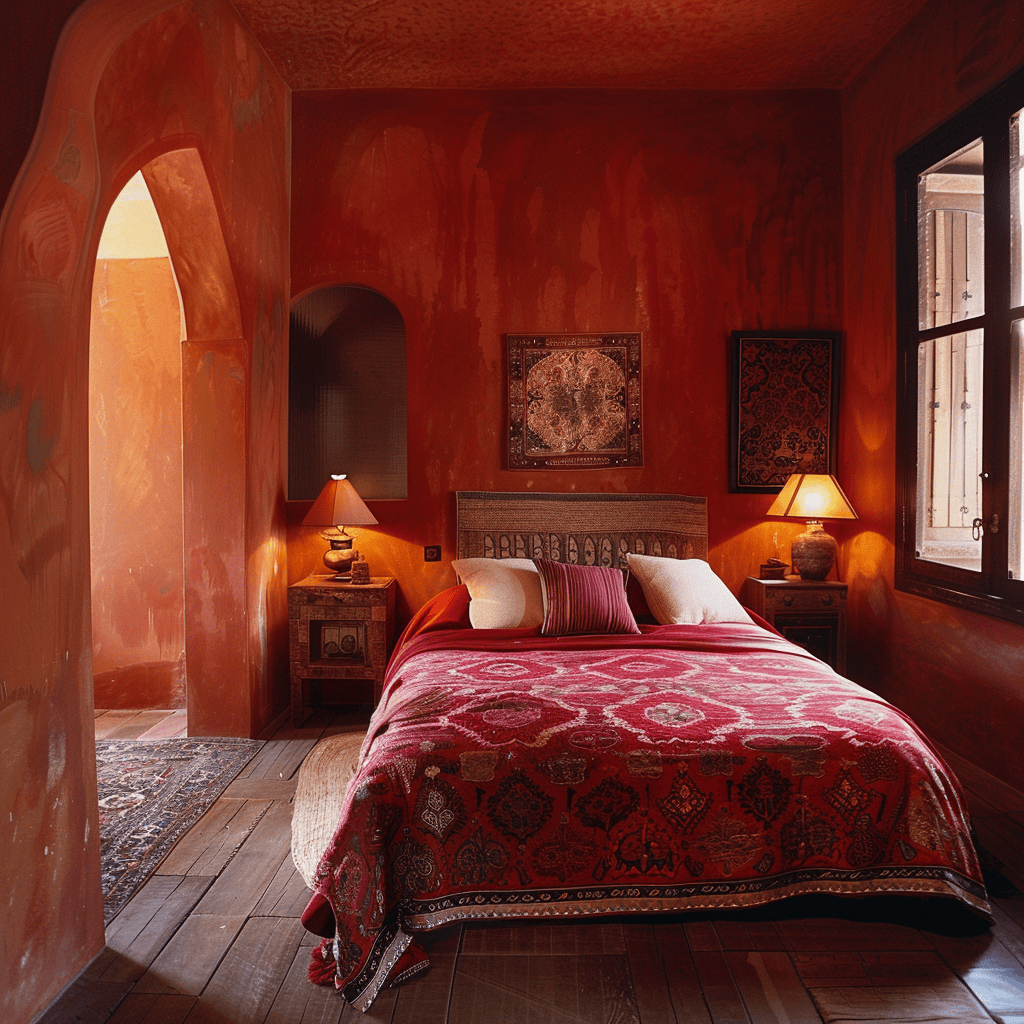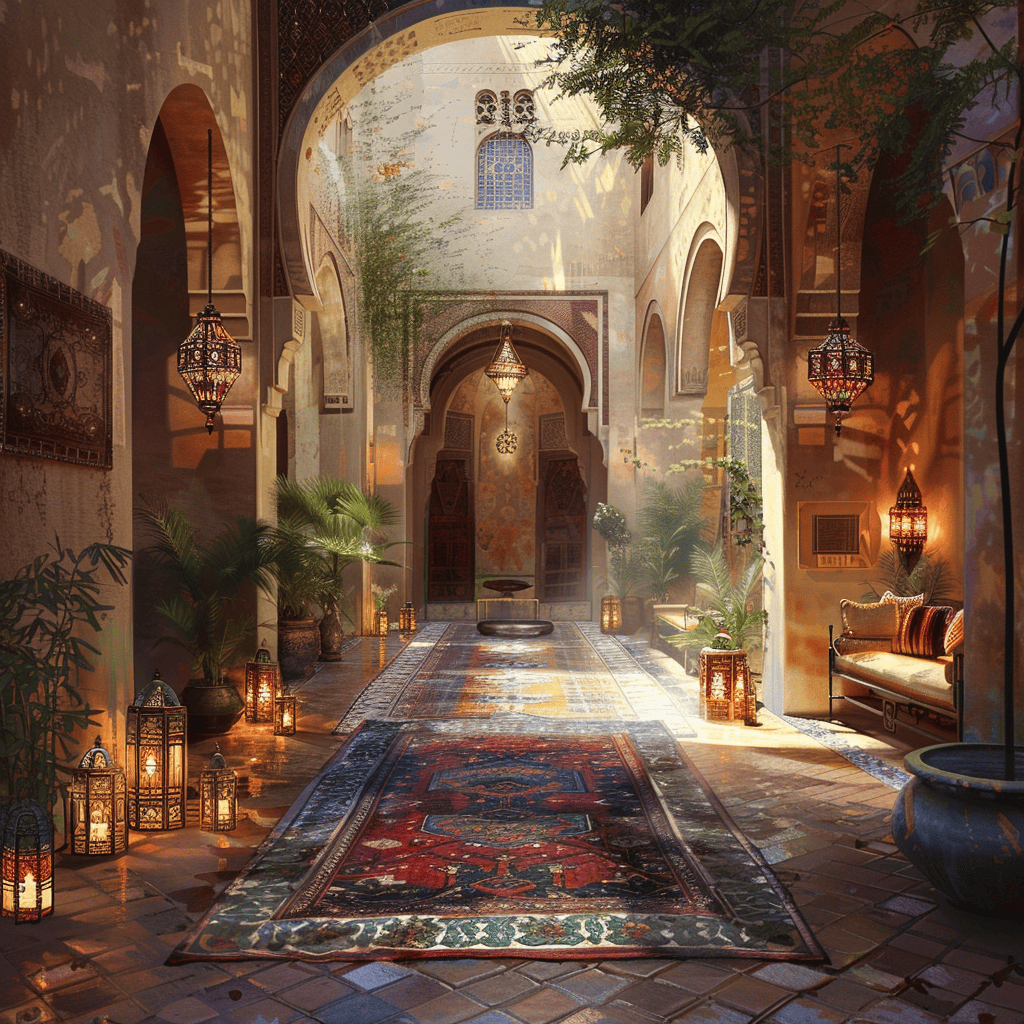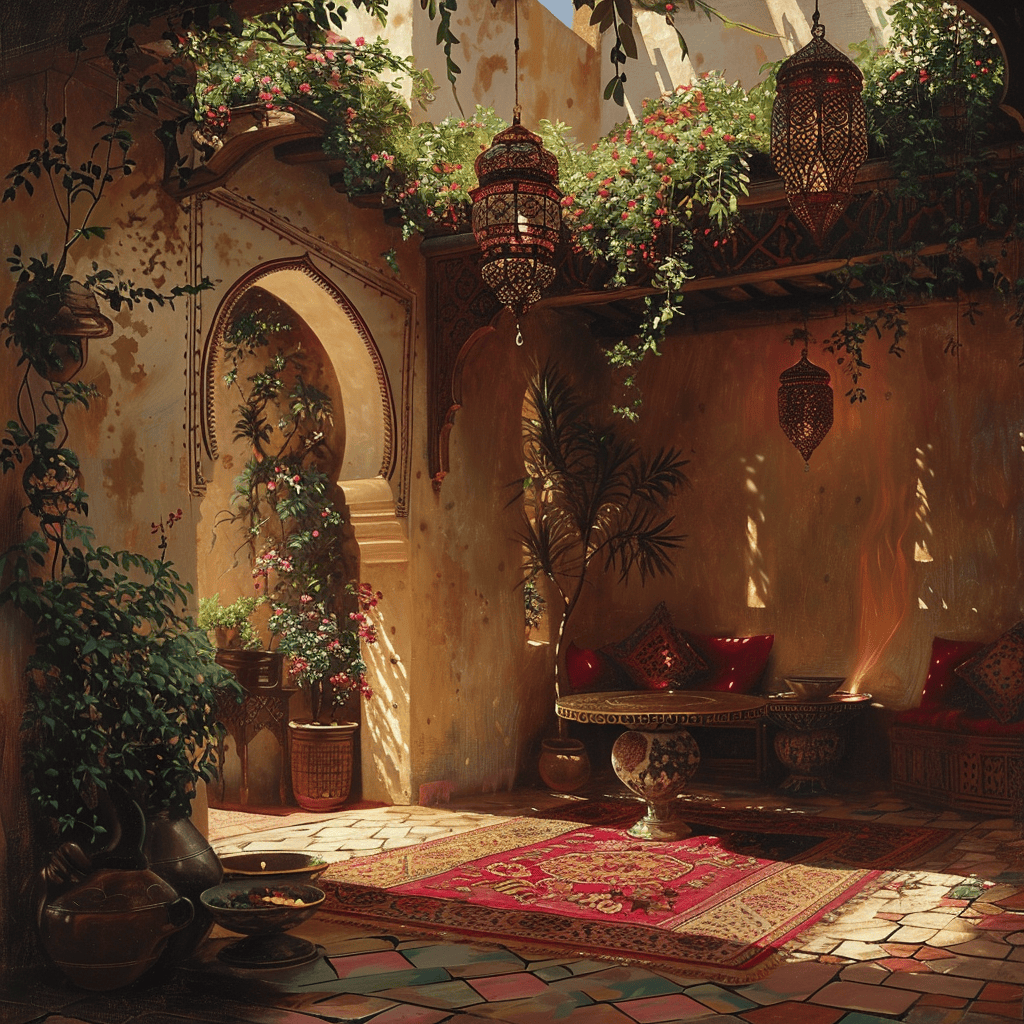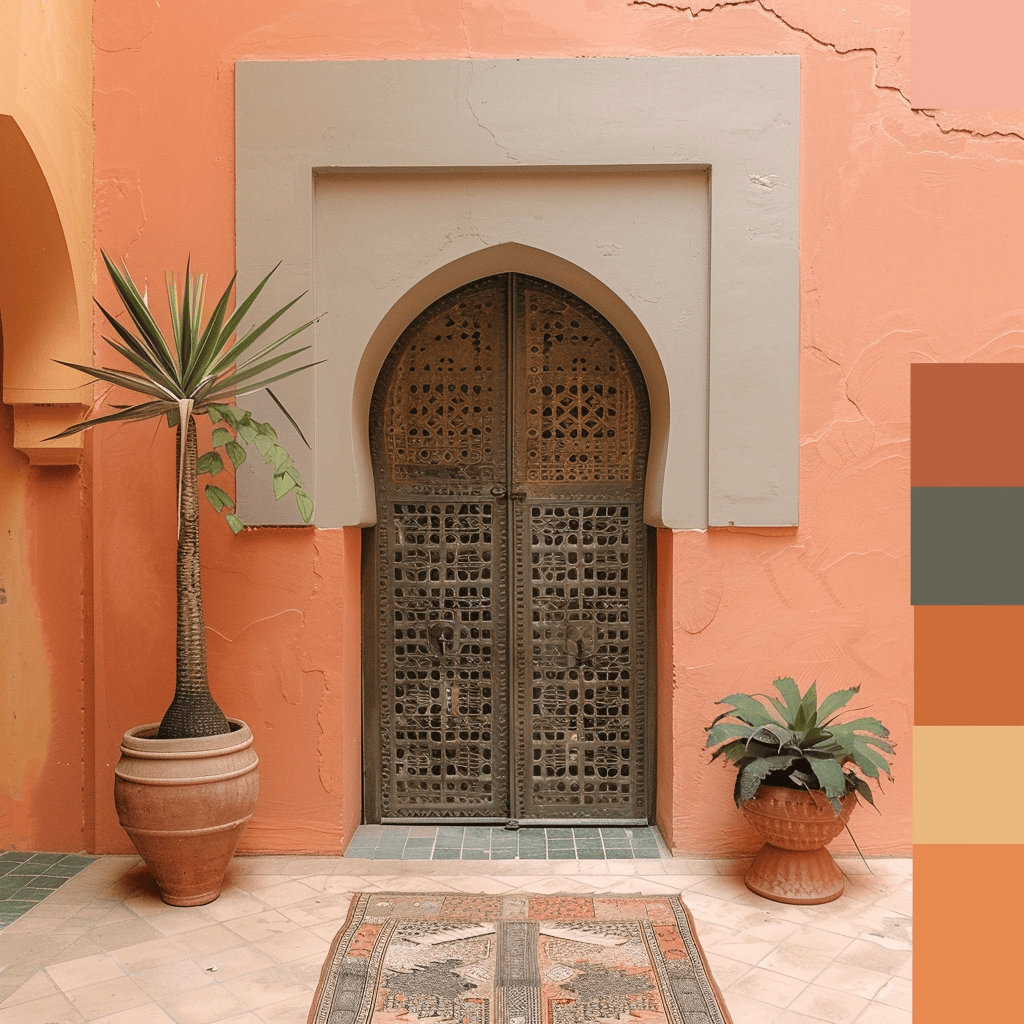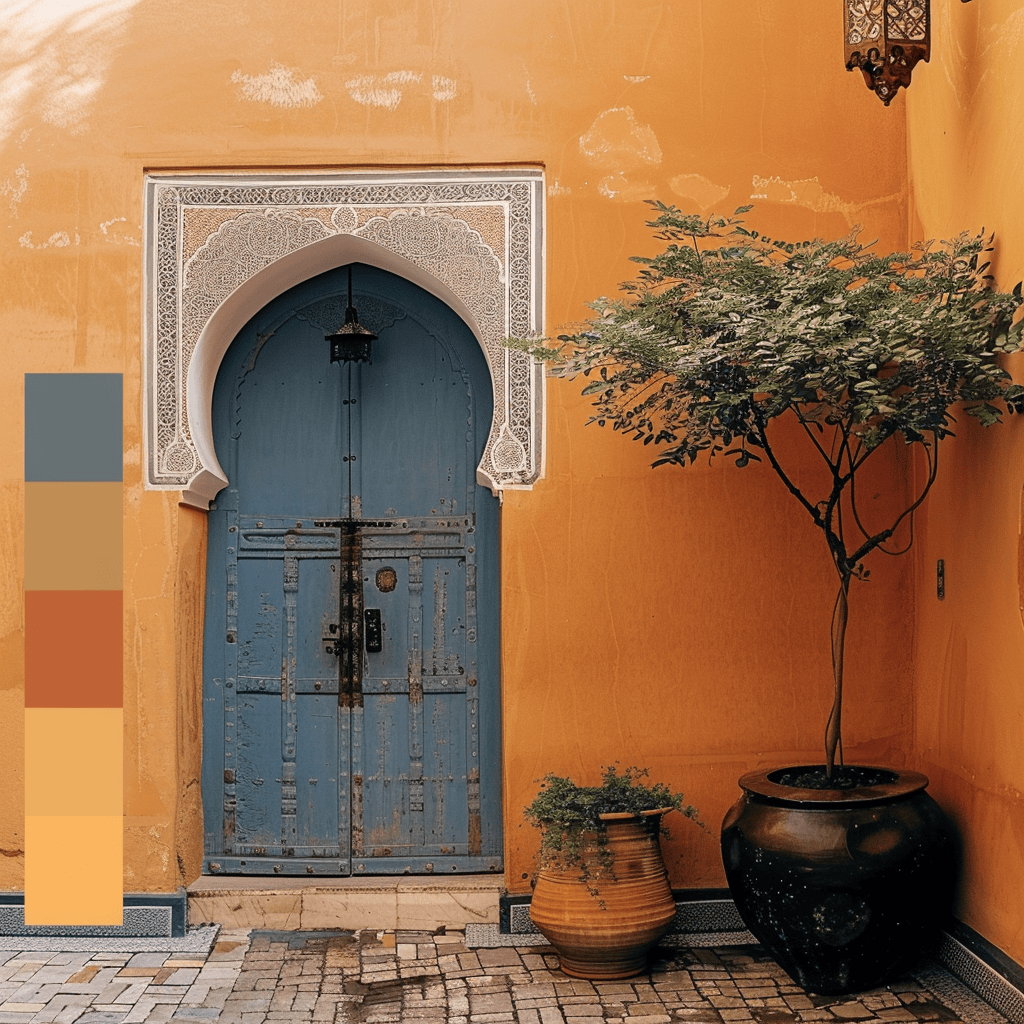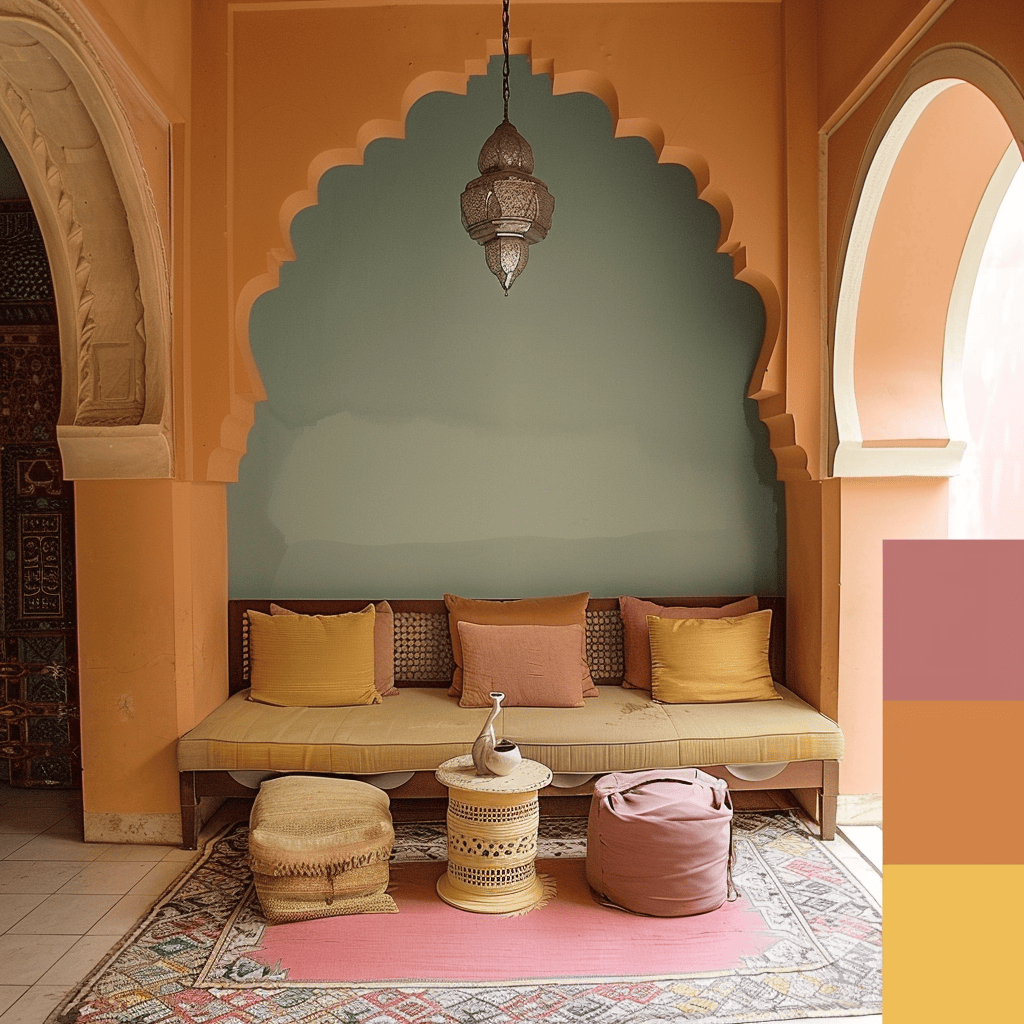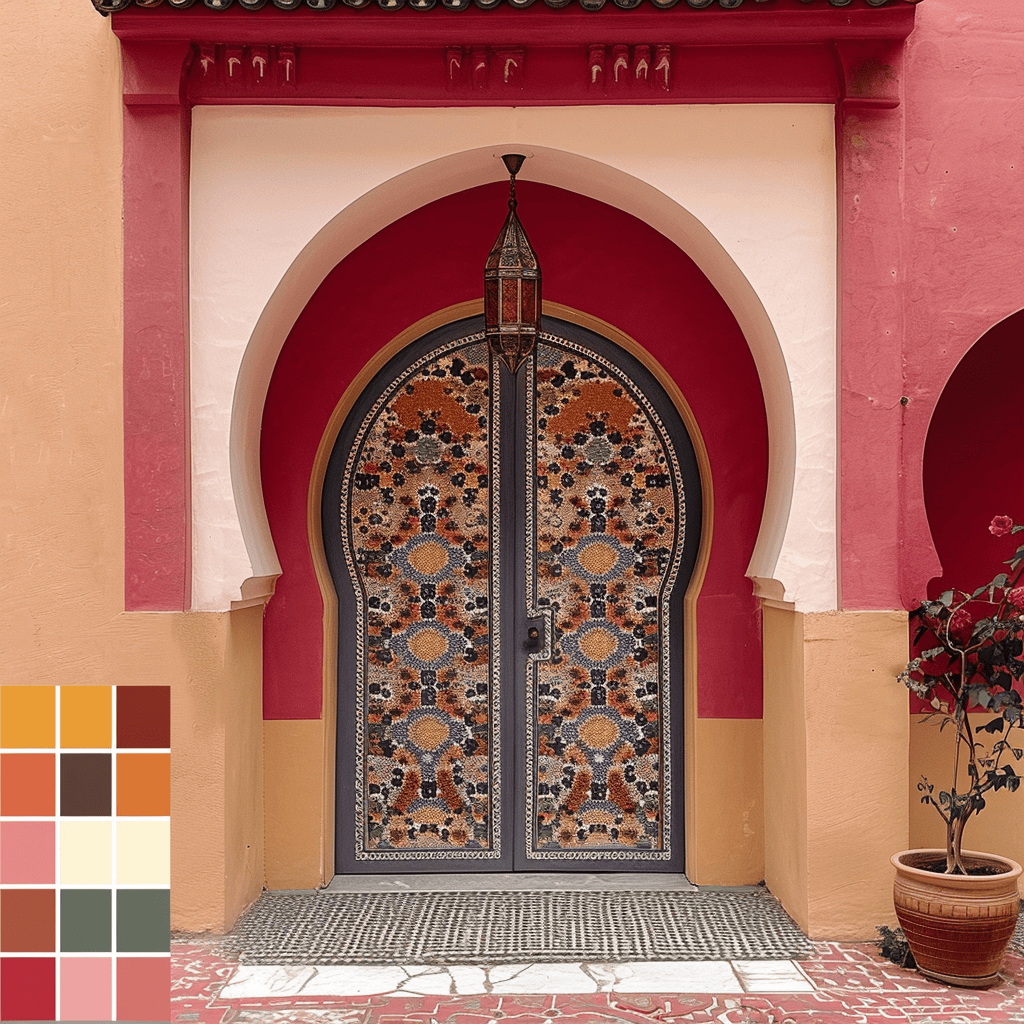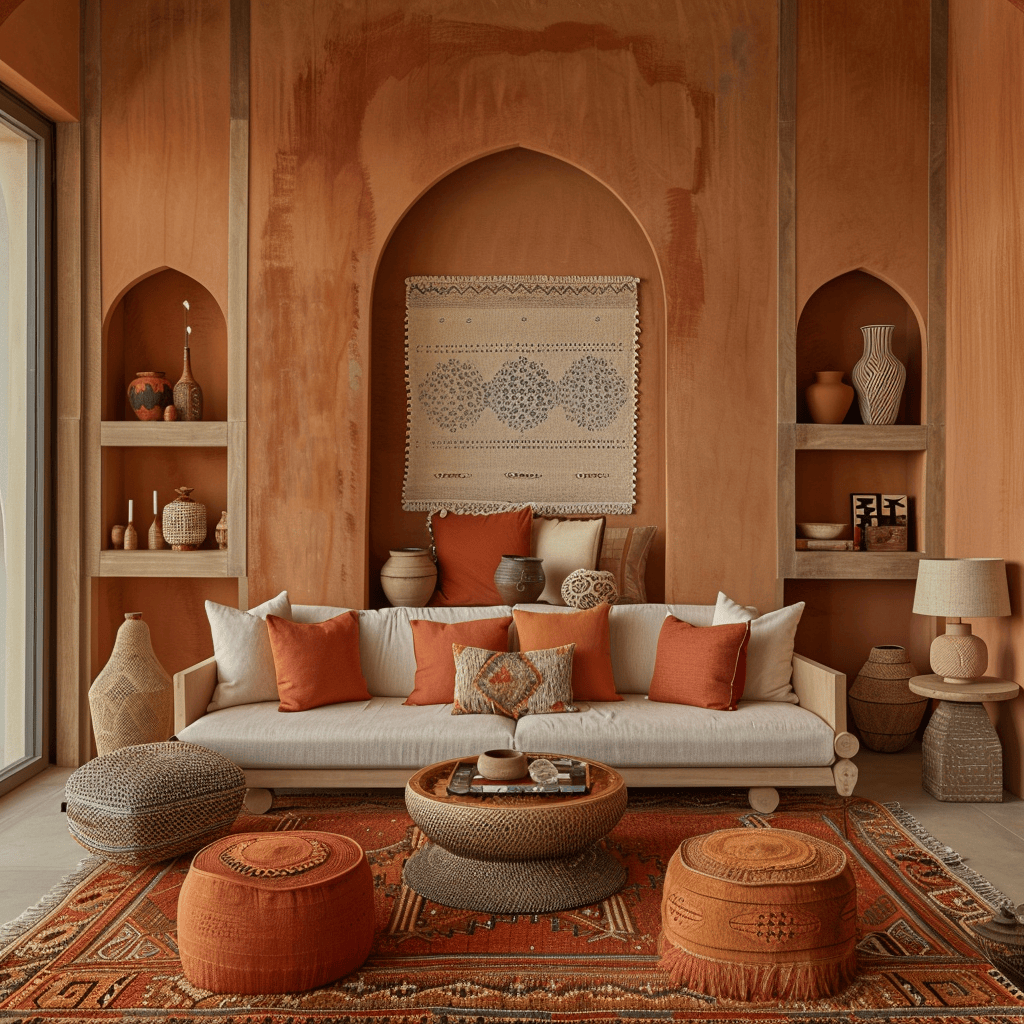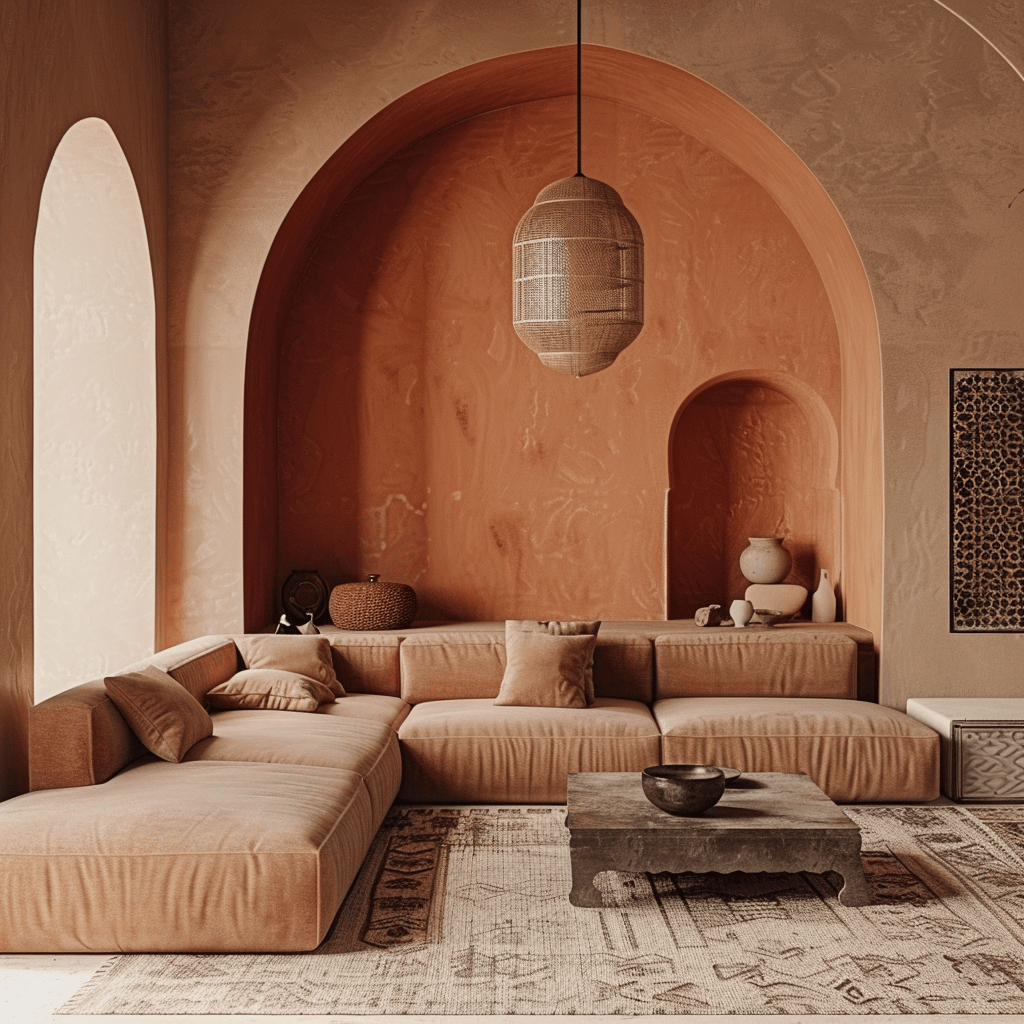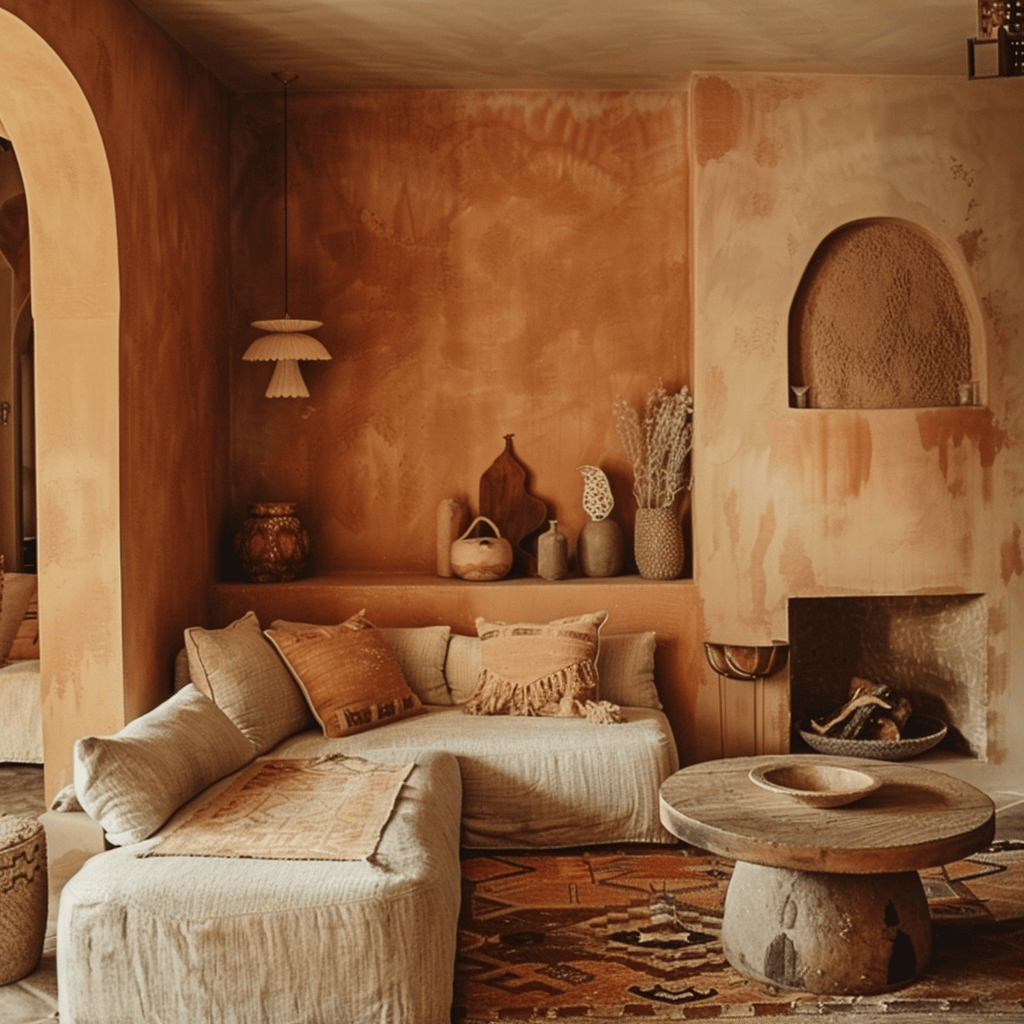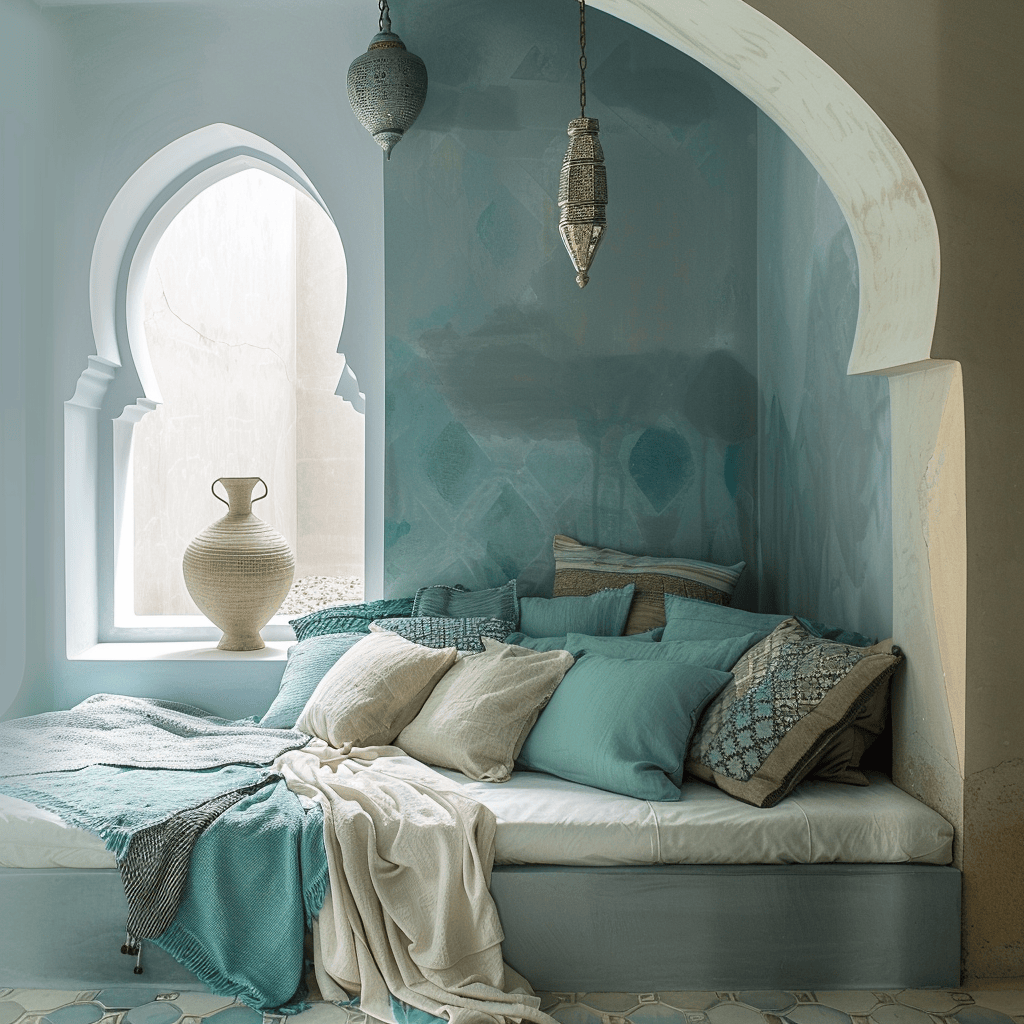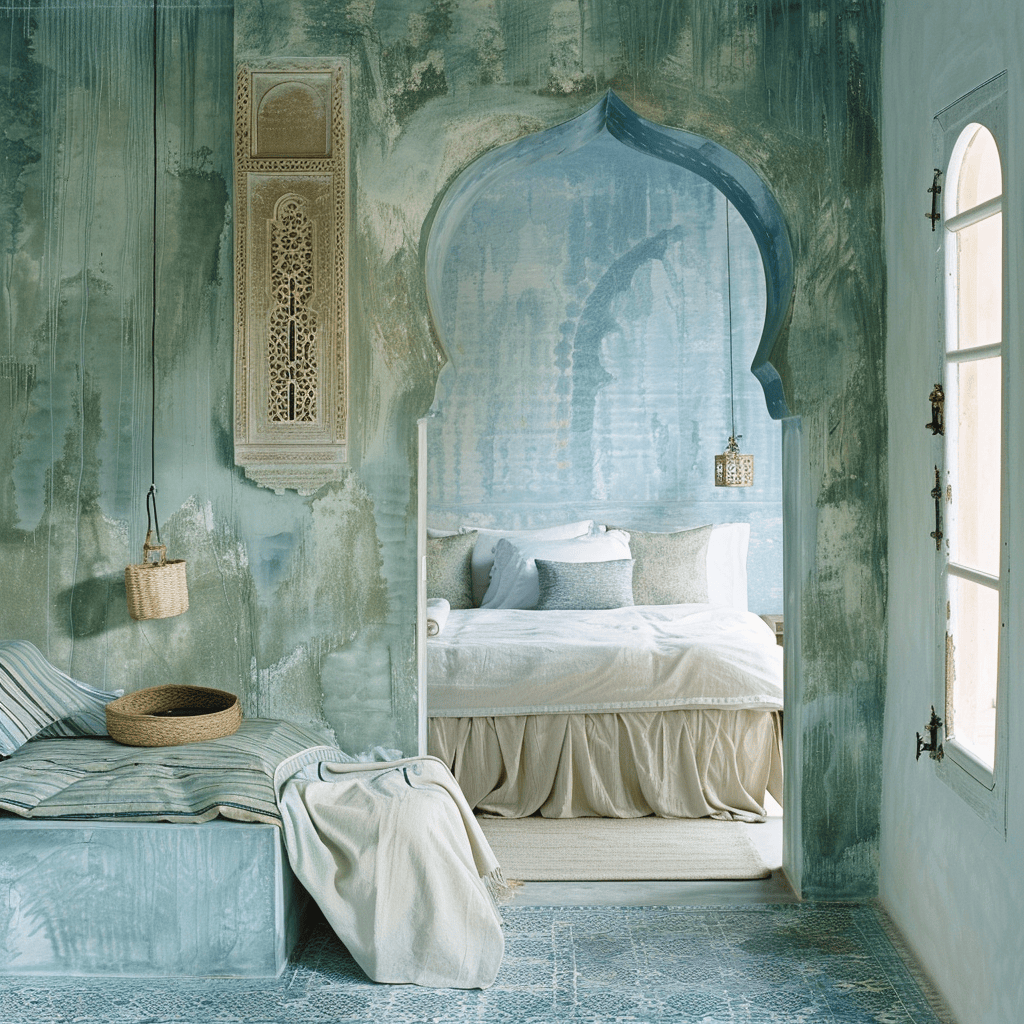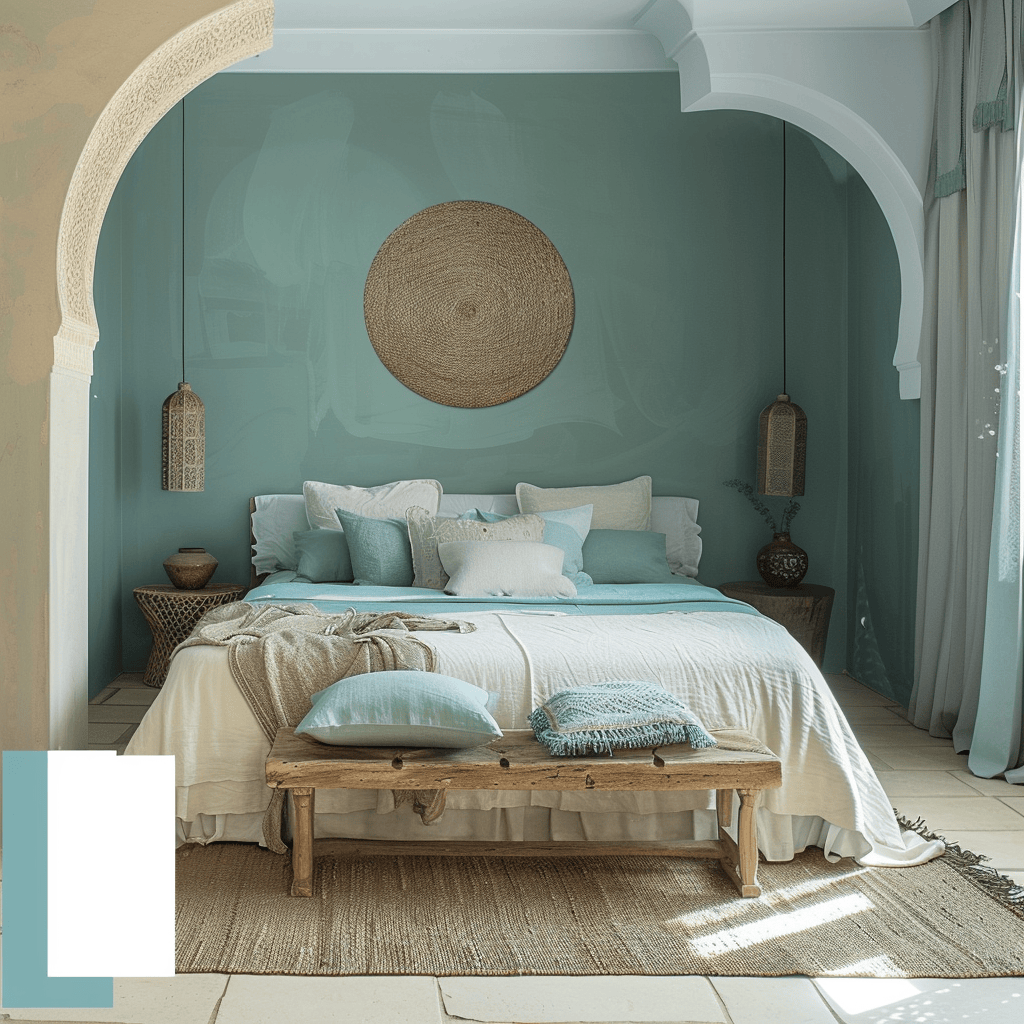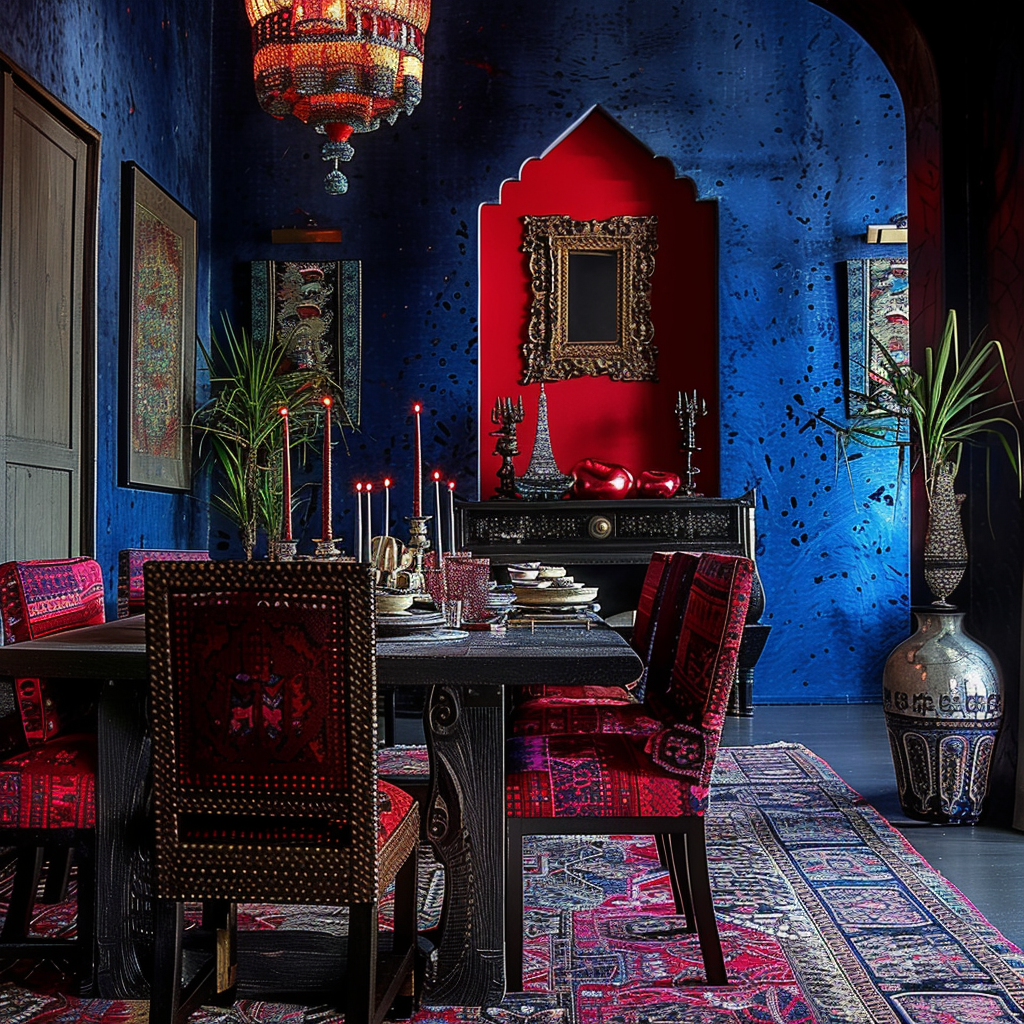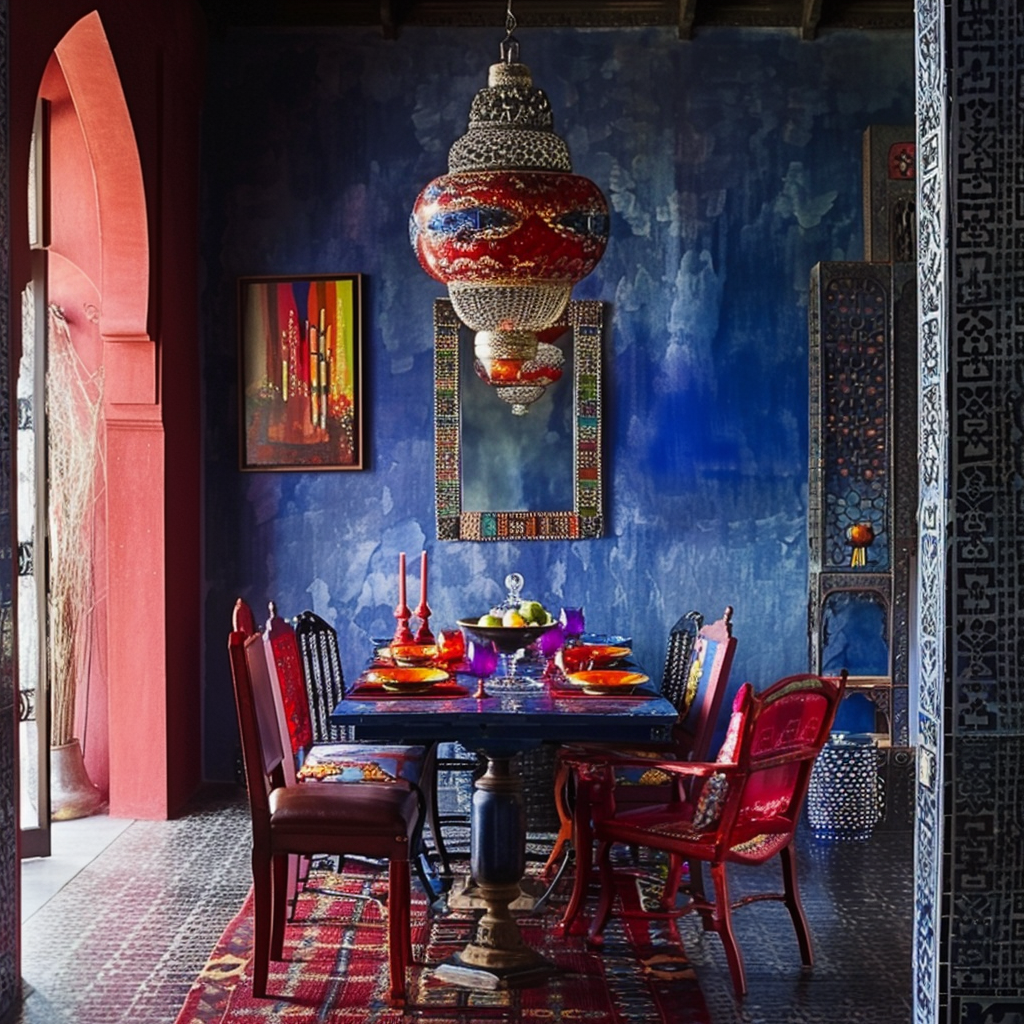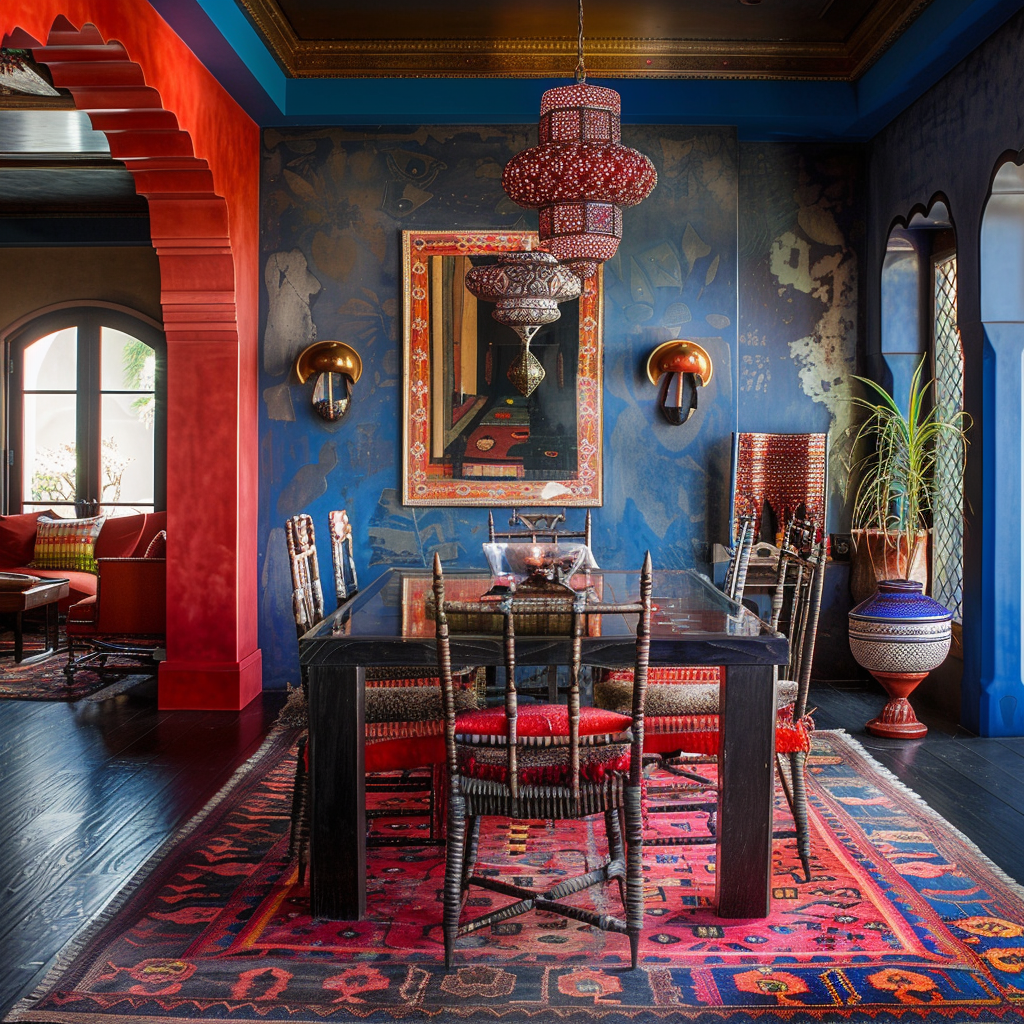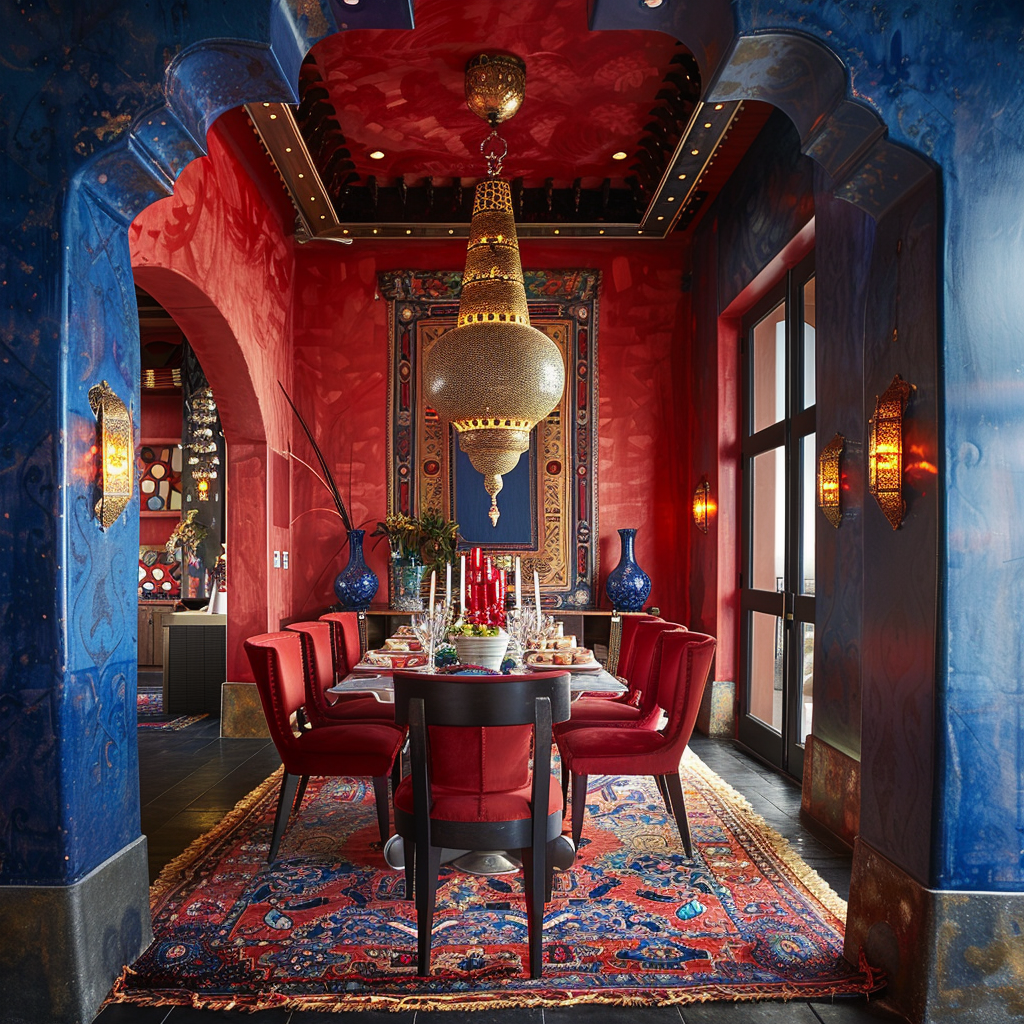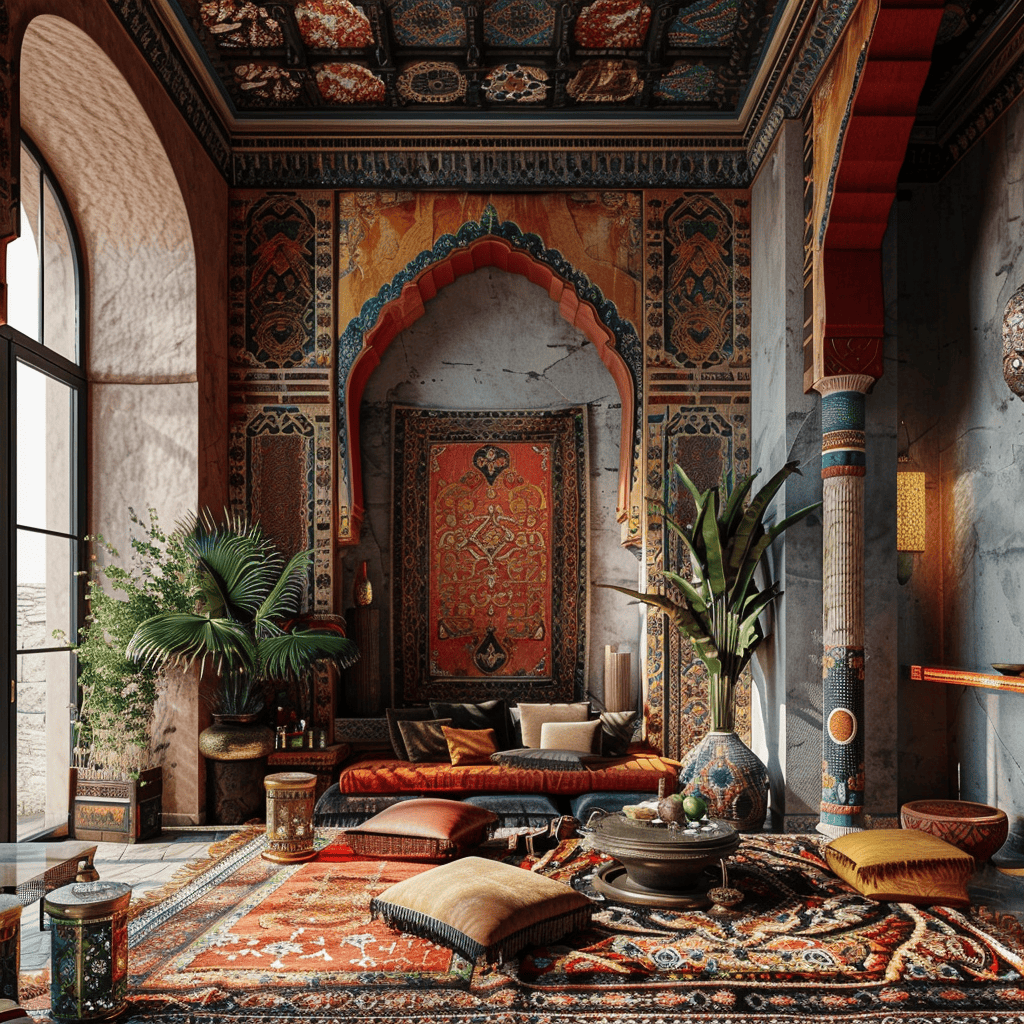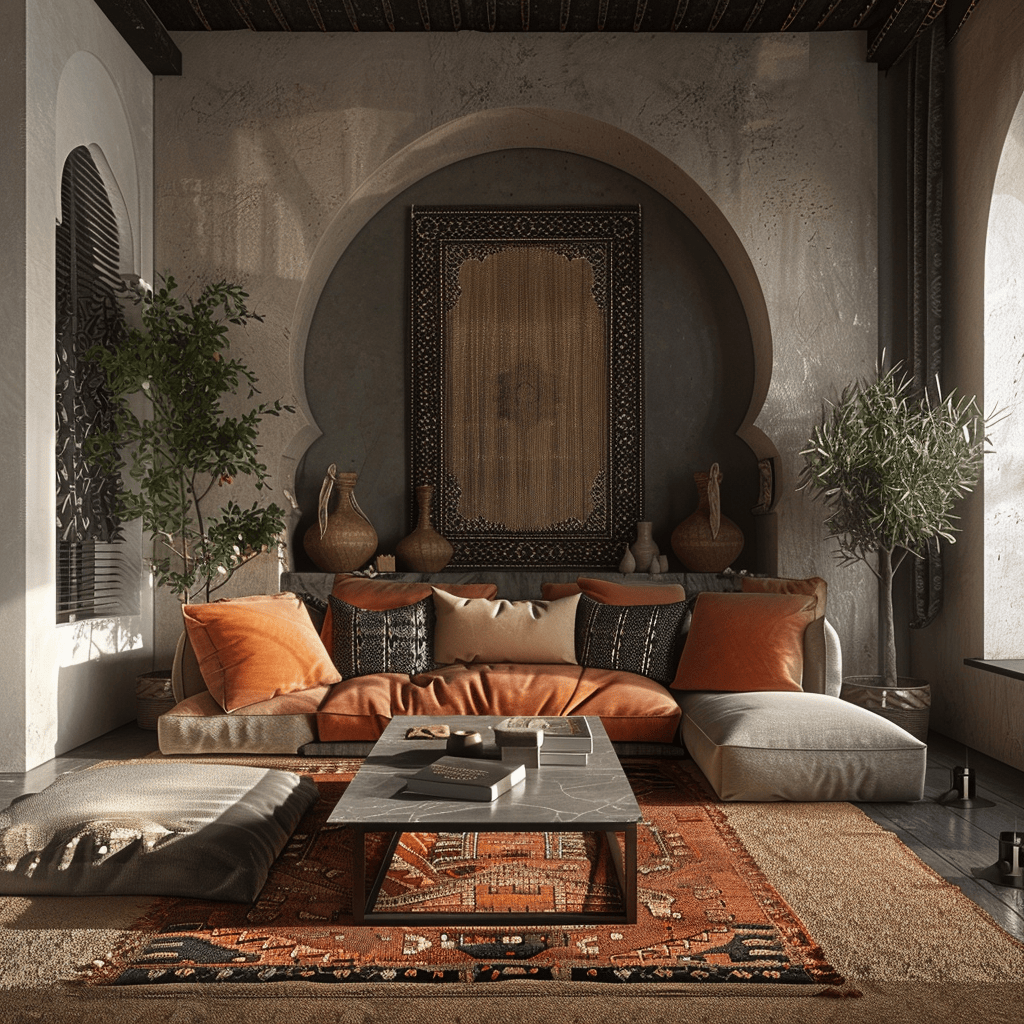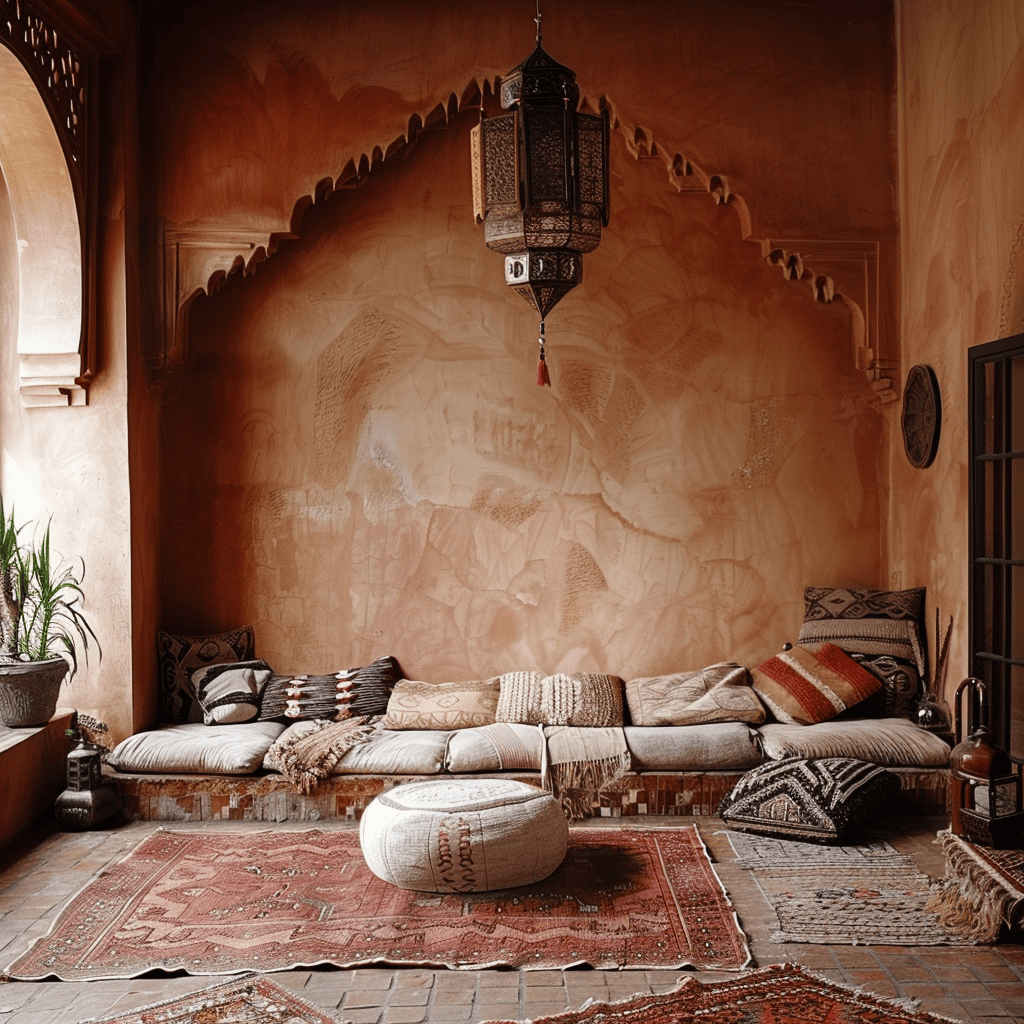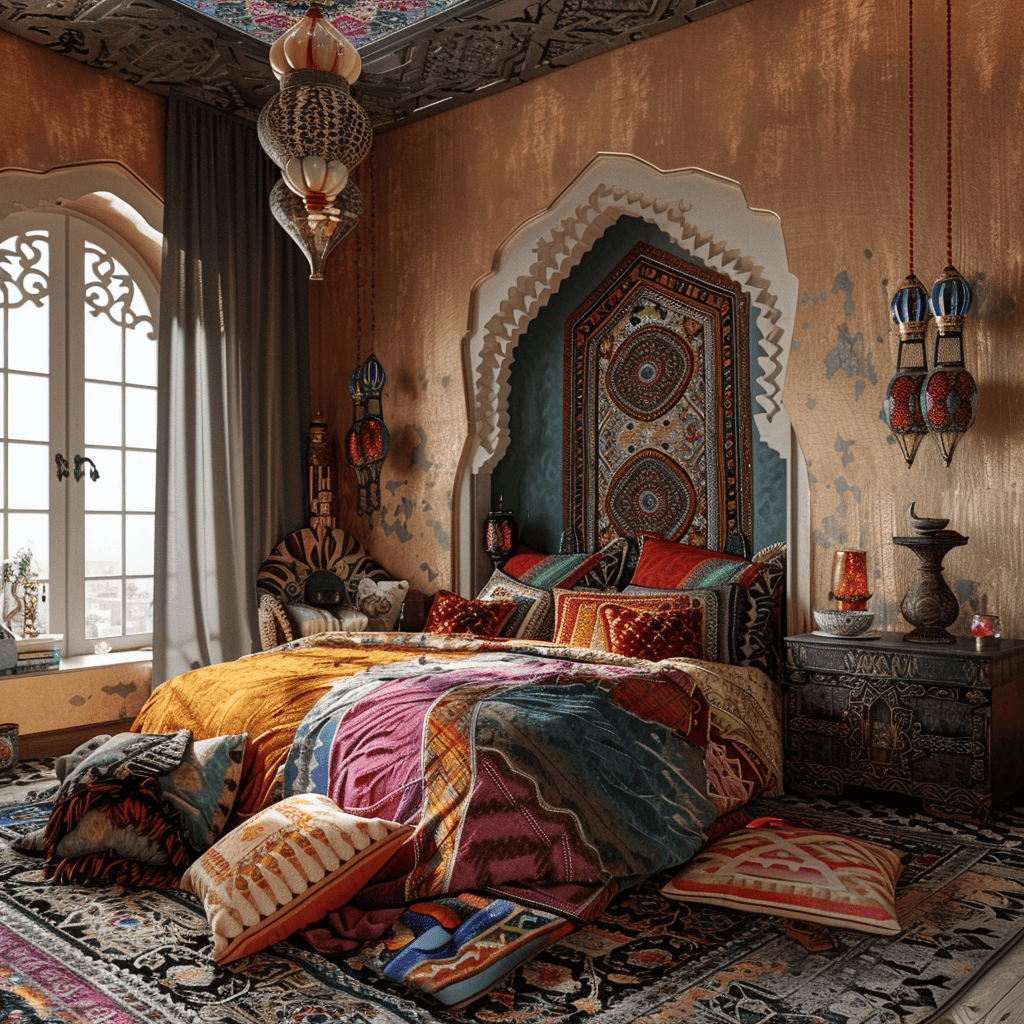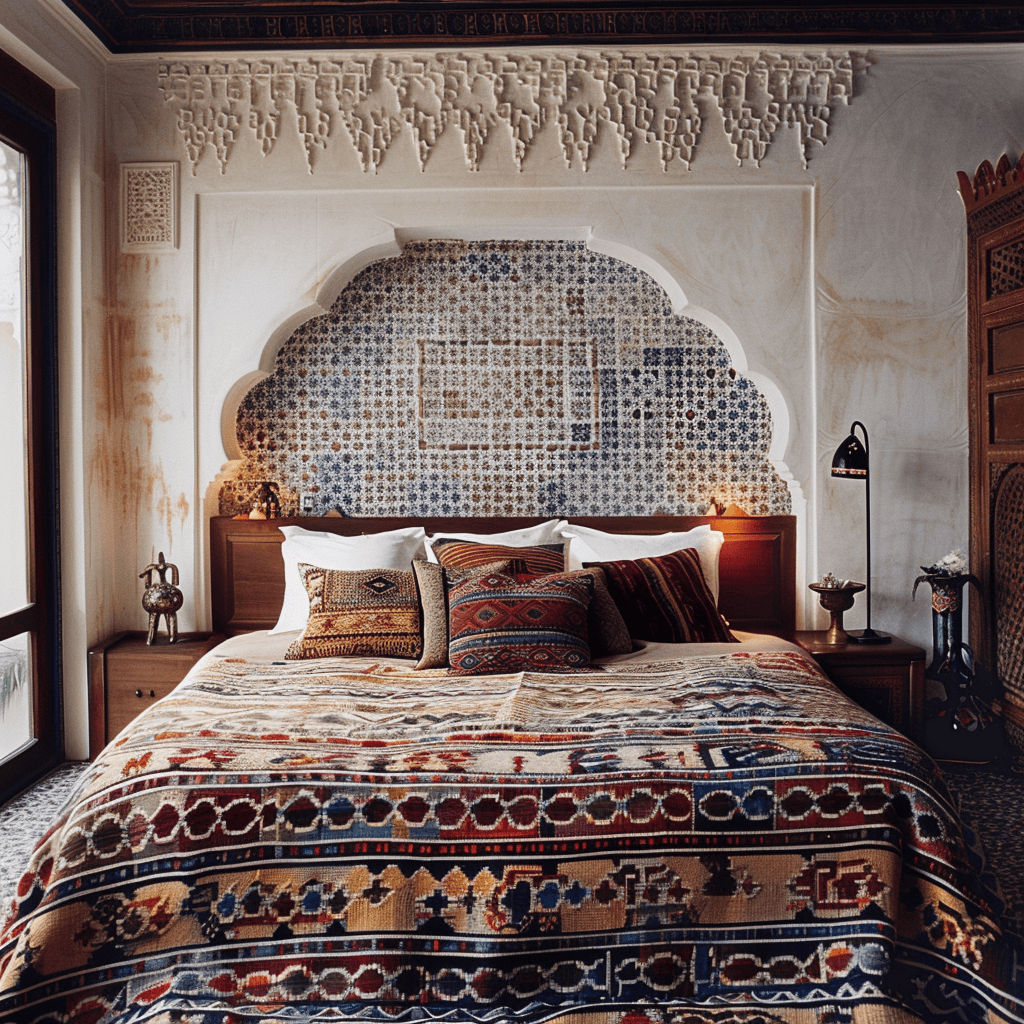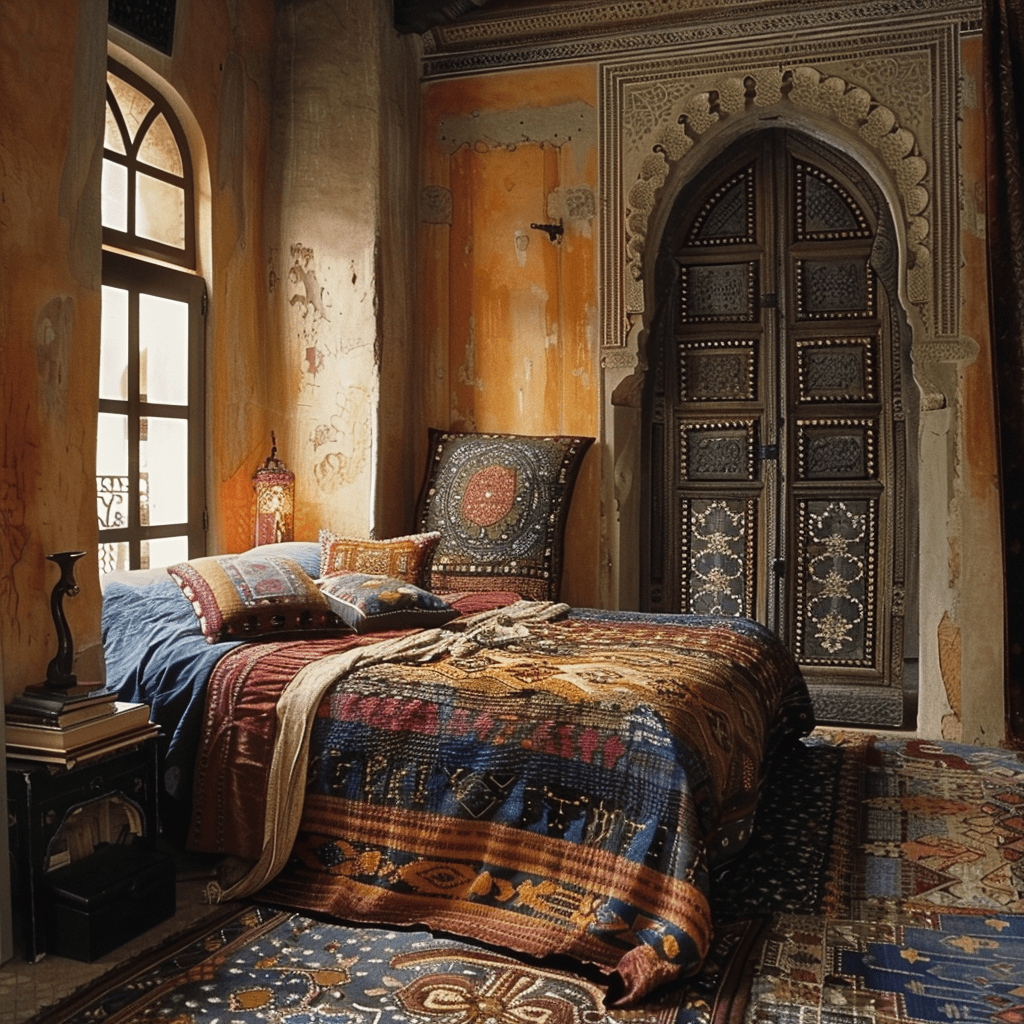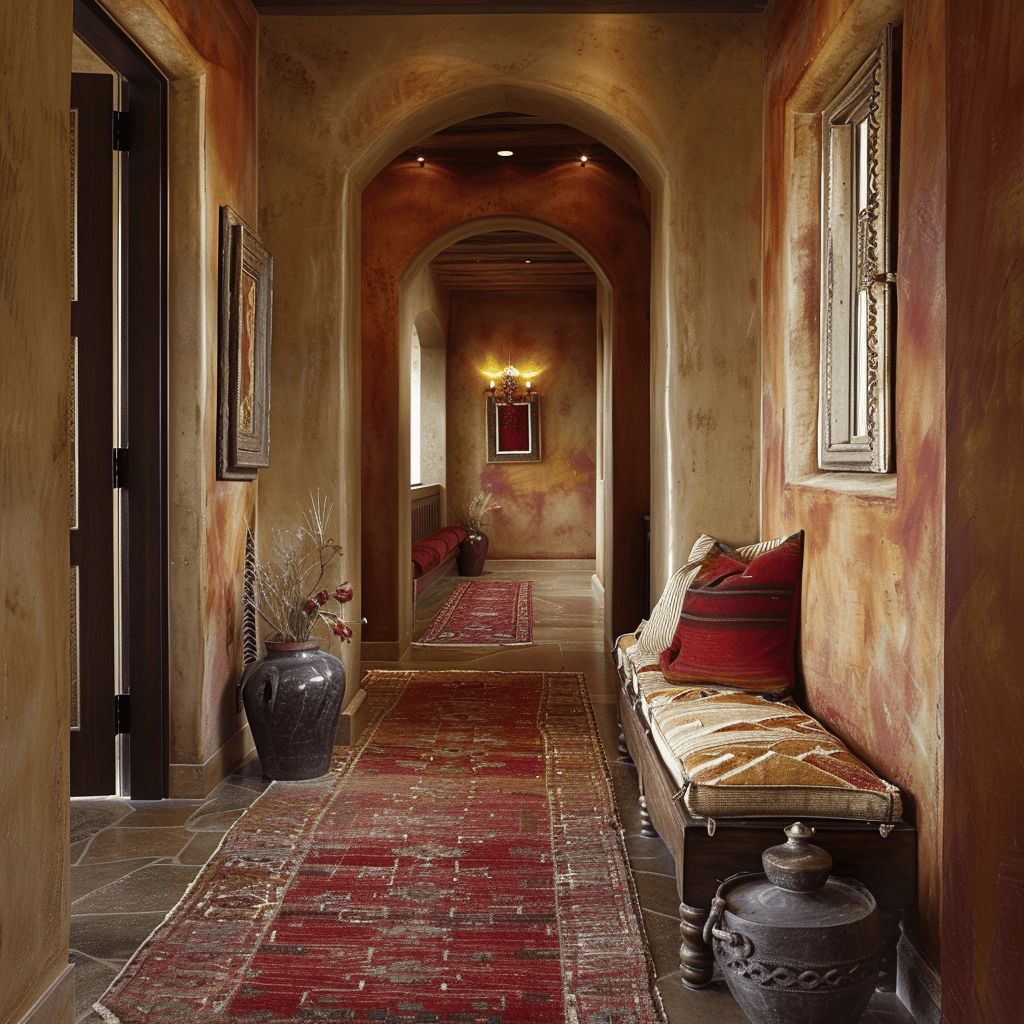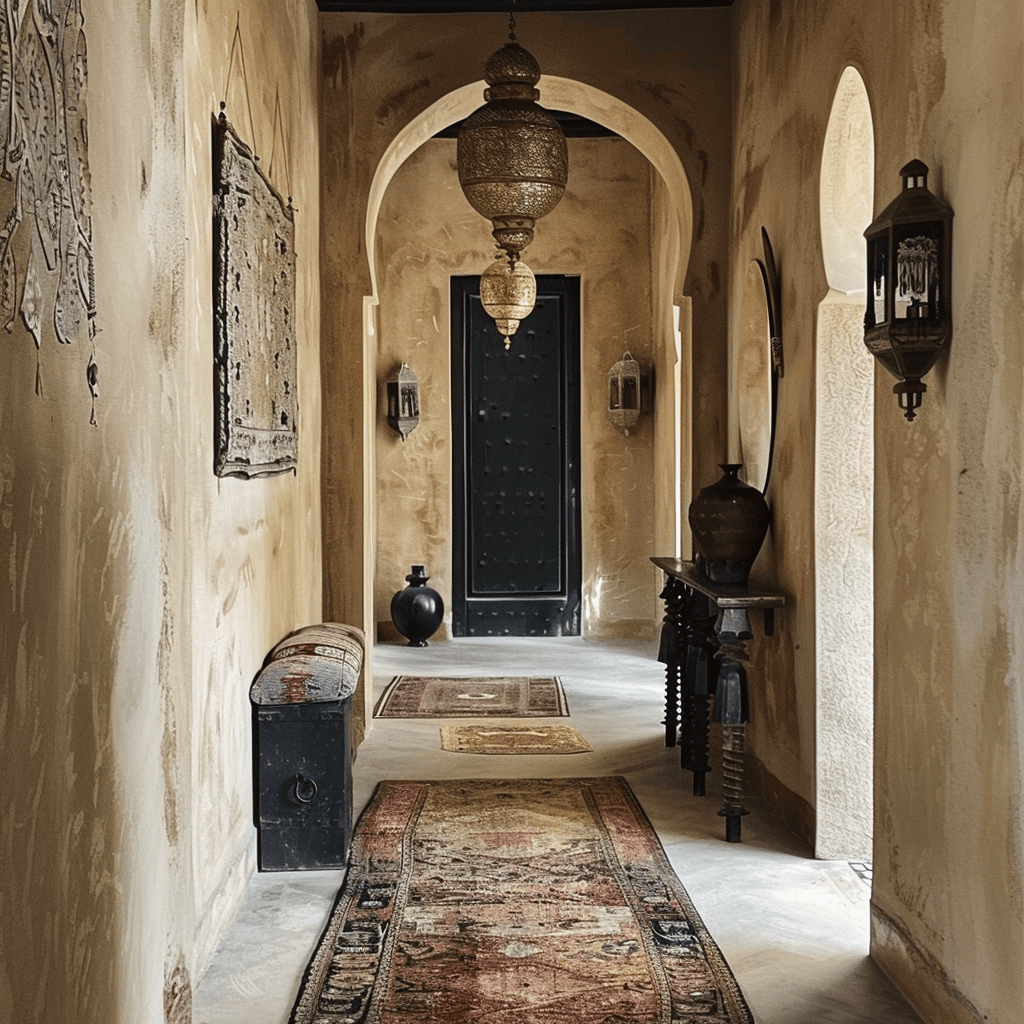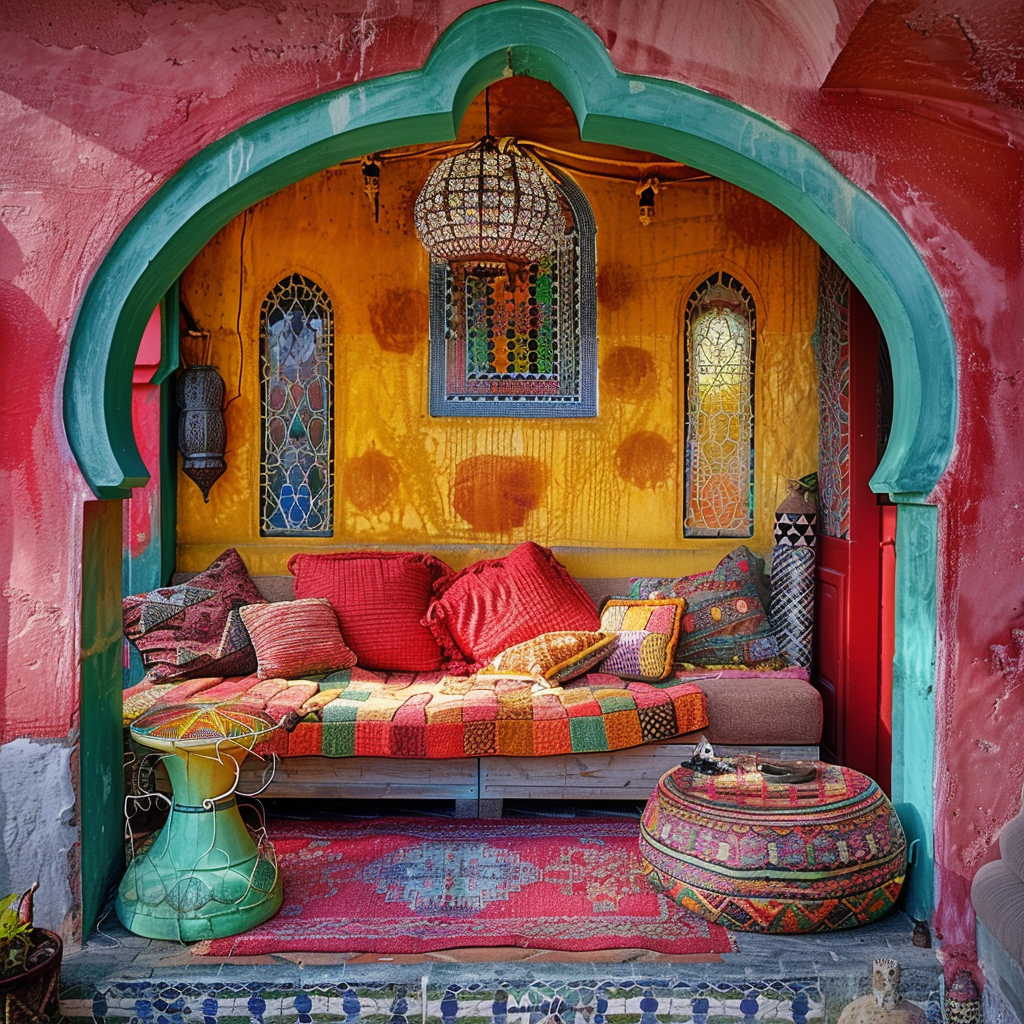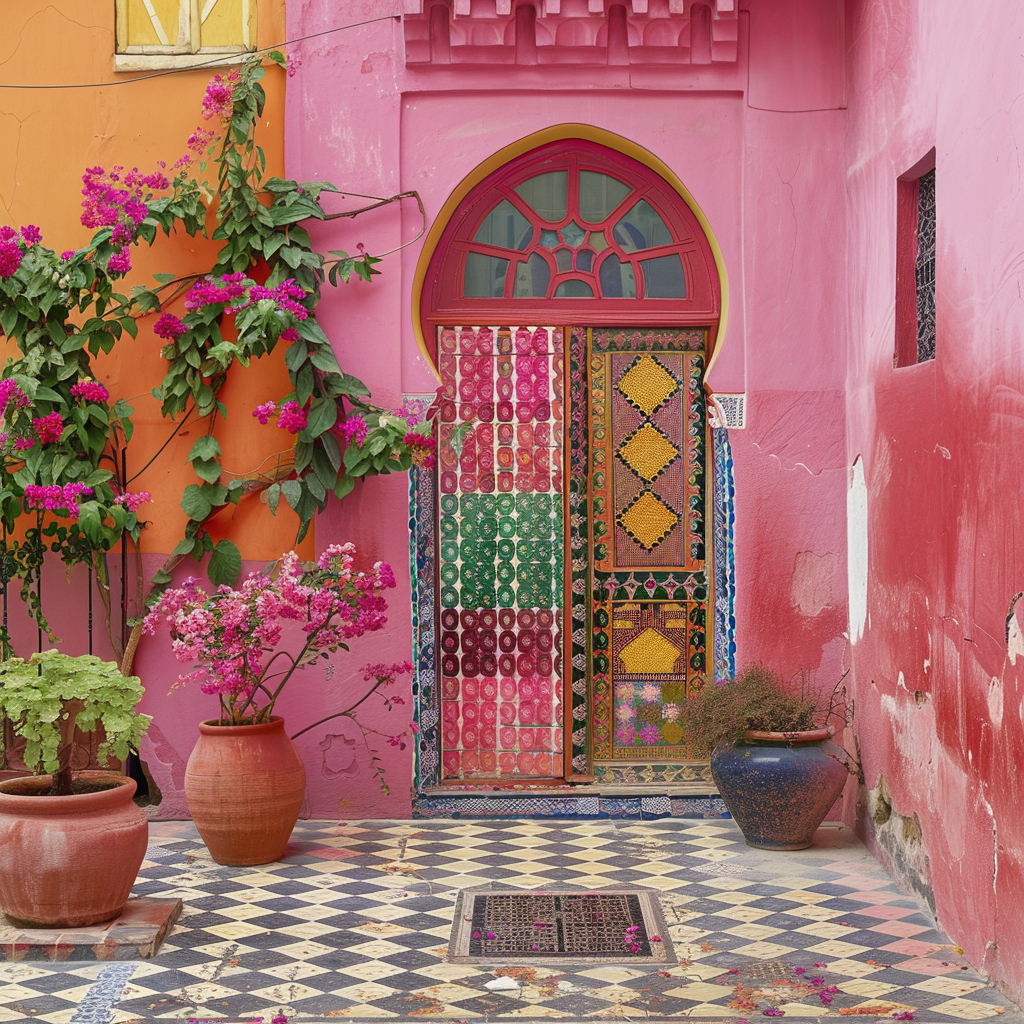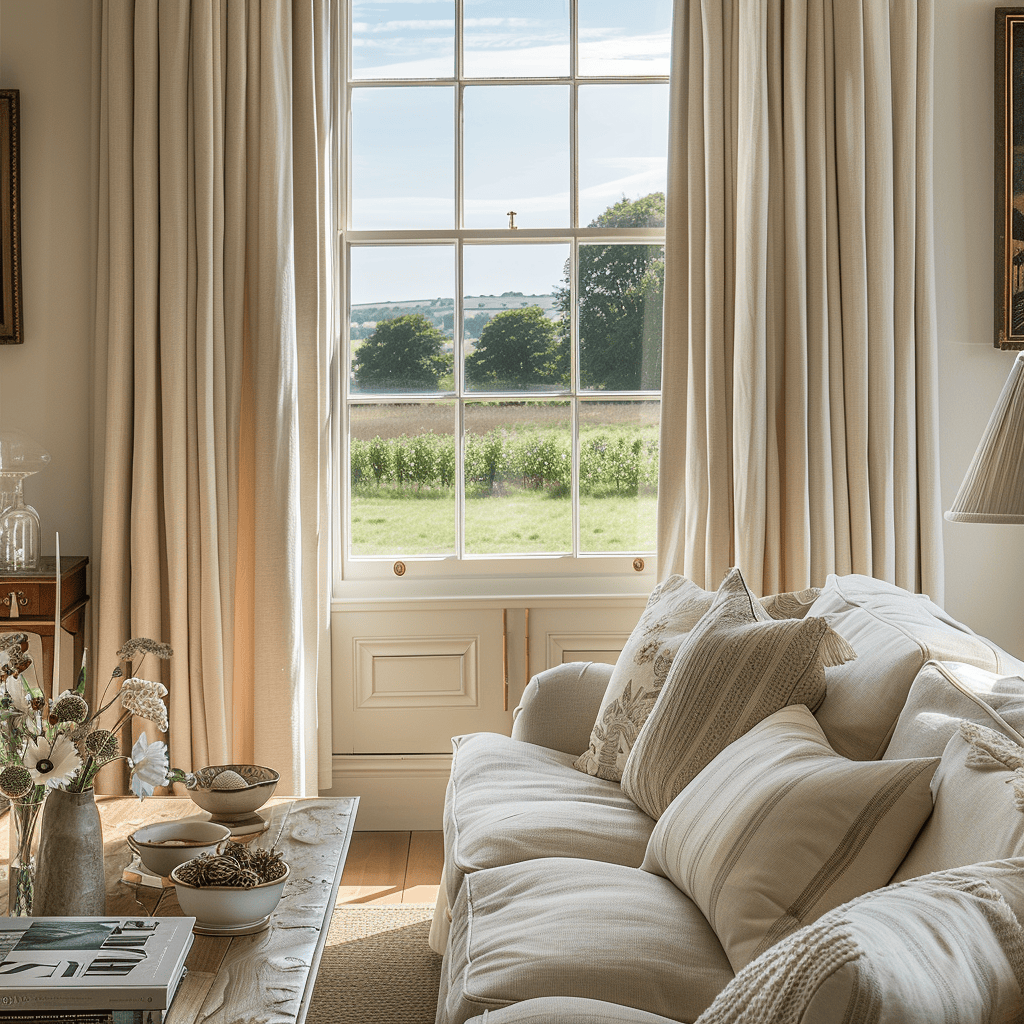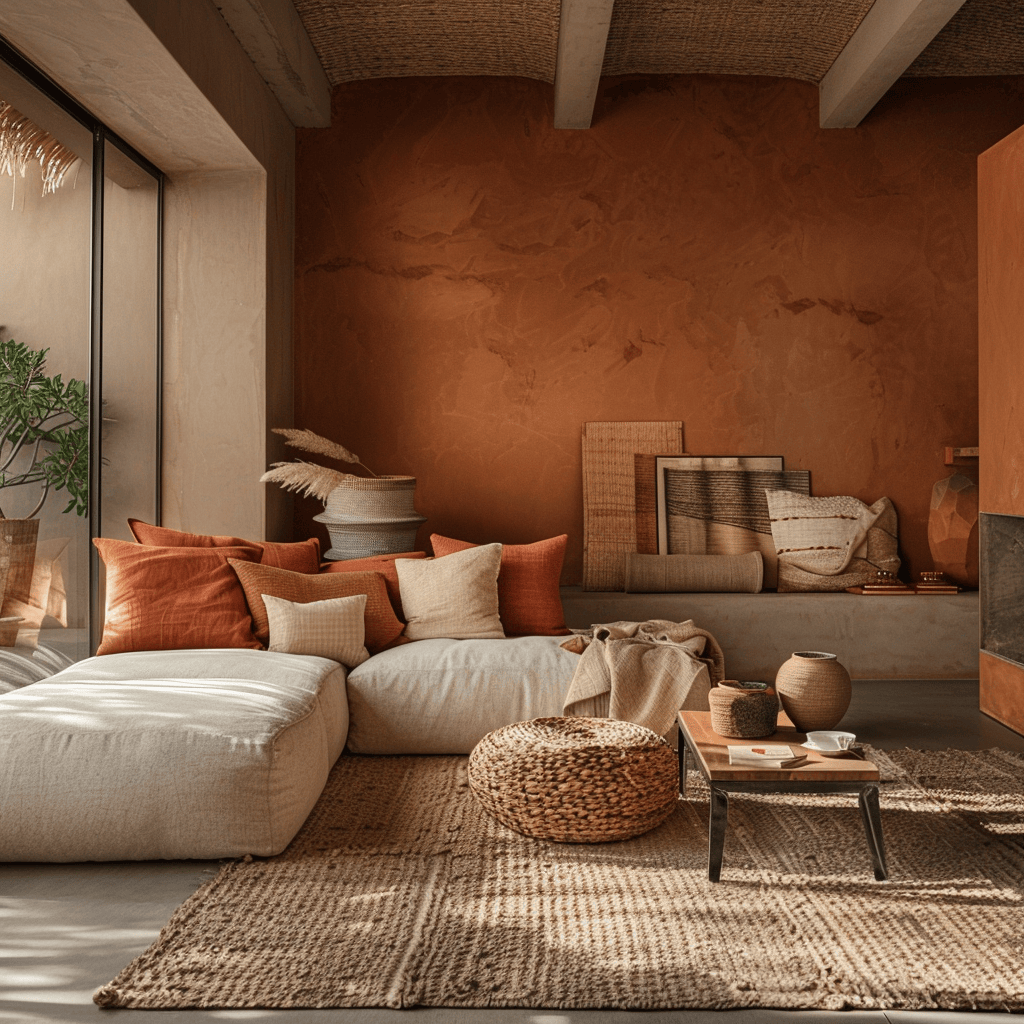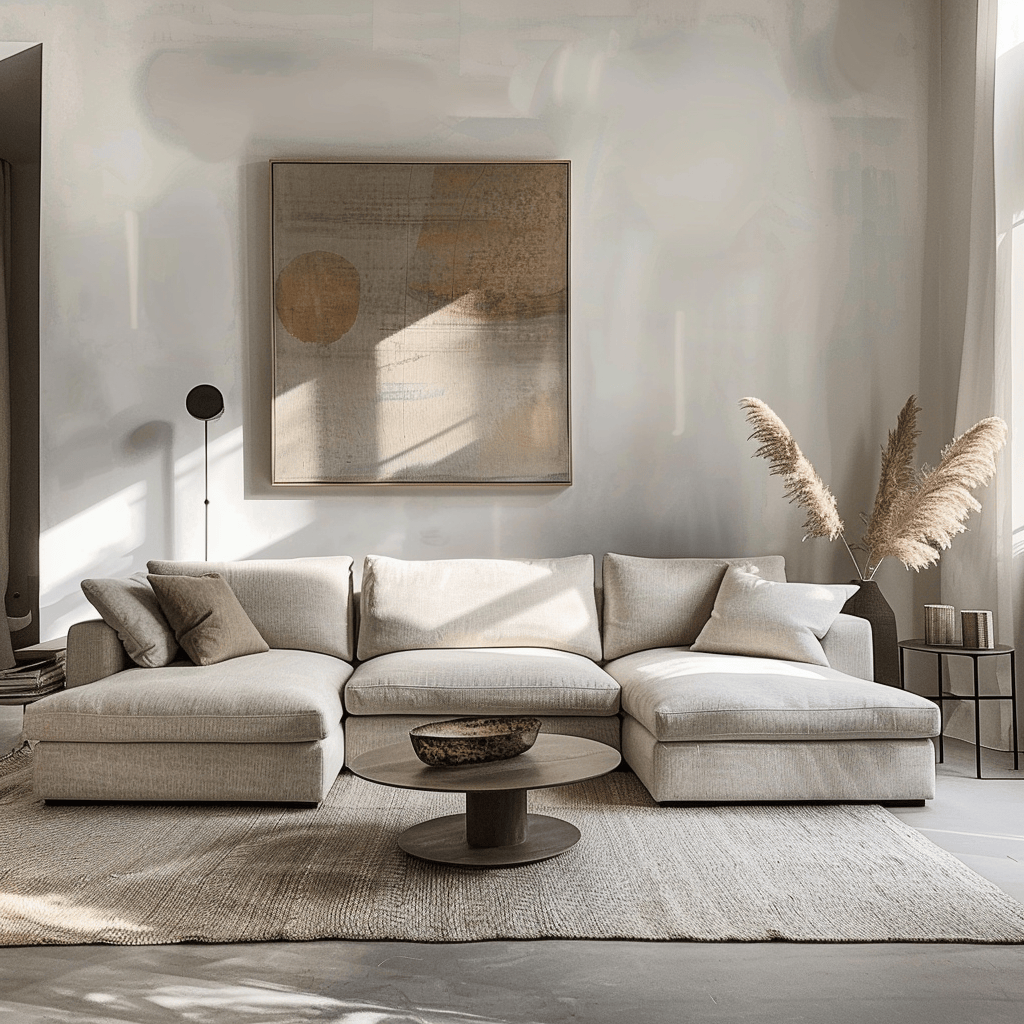Uncover the Secrets of Morocco's Mesmerizing Color Palette
By Alan George
I know you're probably itching to infuse your home with some of that Moroccan magic, and I don't blame you one bit. Whether you're dreaming of a cozy living room with warm terracotta tones, a calming bedroom retreat with soothing blues, or a dining room that pops with vibrant jewel tones, the Moroccan color palette has got you covered. But here's the thing – there's so much more to Moroccan colors than meets the eye. Each hue holds a rich history and cultural significance that adds depth and meaning to your design choices. And let's not forget about those intricate tilework patterns and lush textiles that make Moroccan interiors so darn enchanting! Get comfy, grab your favorite beverage, and let's explore the magic of Moroccan colors together.
Primary Colors
Bold and saturated hues like deep reds, brilliant blues, and rich yellows are prevalent in Moroccan design. These colors are often used in intricate tilework, textiles, and architectural details.
2/88
Neutrals
Earthy tones like warm terracotta, soft beiges, and warm grays provide a grounding base for the vivid primary colors. These neutrals are commonly found in plaster walls, clay tiles, and natural materials.
Accent Colors
Jewel toned accents like emerald green, lapis blue, and deep plum add depth and richness to Moroccan color schemes. These colors are often used in smaller doses to create focal points or highlight intricate patterns.
Color Significance and Symbolism
Colors in Moroccan design carry deep cultural and symbolic meanings, influenced by the country's history, religion, and connection to nature.
Historical and Cultural Influences
The Moroccan color palette is a reflection of the country's diverse cultural heritage, including Berber, Arab, and European influences. Each culture has contributed unique hues and symbolism to the overall aesthetic.
Nature Inspired Hues
Morocco's natural landscapes, from the vibrant spice markets to the vast deserts and lush gardens, have inspired the warm, earthy tones and vibrant hues found in traditional Moroccan design.
Color Theory and Harmonies
Understanding color theory and harmonies is crucial for creating cohesive and visually appealing Moroccan inspired spaces.
Complementary Color Schemes
The use of complementary colors (opposite on the color wheel) is common in Moroccan design, creating striking contrasts and adding depth to patterns and textures.
Color Wheel
Analogous color schemes, which use colors that are adjacent on the color wheel, are often seen in Moroccan textiles and tilework, creating a harmonious and subtle blend of hues.
Triadic Color Schemes
Triadic color schemes, involving three colors equally spaced on the color wheel, are used to create vibrant and balanced color combinations in Moroccan design.
Moroccan Design Elements
Moroccan design is characterized by intricate patterns, rich textures, and unique architectural elements, all of which are closely tied to the use of color.
Zellij Tilework
Zellij, or Moroccan tilework, is a prominent feature in Moroccan design, showcasing intricate geometric patterns and a stunning interplay of colors.
Intricate Patterns
Moroccan patterns, often inspired by Islamic art and architecture, feature intricate and repetitive motifs that incorporate various colors and create a sense of depth and movement.
Textures and Materials
The use of textured materials like plaster, clay, and carved wood adds warmth and depth to Moroccan color schemes, creating a rich and layered aesthetic.
Color Application
The application of Moroccan colors and design elements can transform various spaces in a home, creating a unique and immersive atmosphere.
Walls and Surfaces
Living Room
In the living room, bold accent walls or intricate tilework can create a focal point, while warm neutral tones on other surfaces provide a balanced and inviting ambiance.
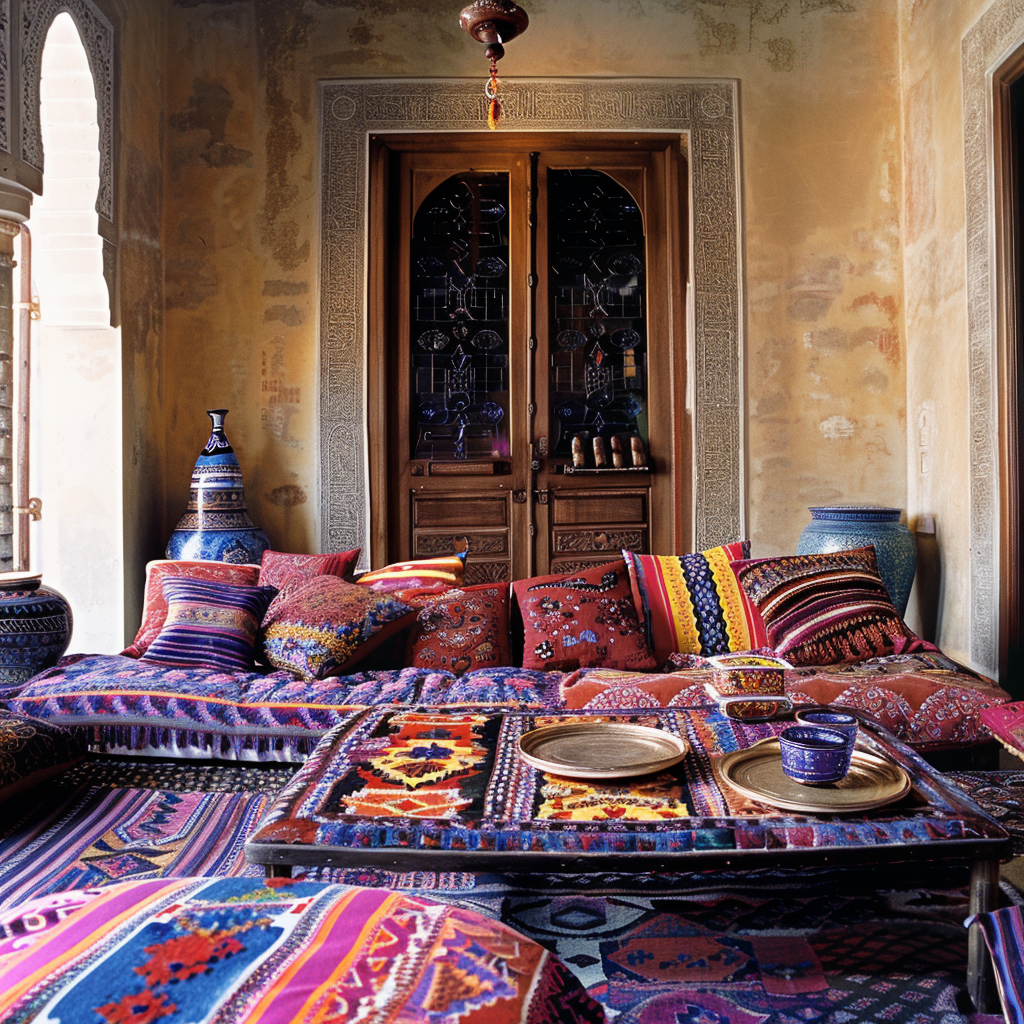
28/88
Bedroom
Soothing and serene hues like soft blues and greens can create a calming atmosphere in the bedroom, while pops of vibrant color in textiles or accessories add visual interest.
Bathroom
The bathroom is an ideal space to incorporate Moroccan tilework, with colorful and intricate patterns adding depth and character to the space.
Hallway
Hallways can be transformed with bold, saturated colors or intricate stenciled patterns, creating a sense of movement and visual interest as you move through the space.
Textiles and Upholstery
Living Room
Moroccan inspired textiles, such as richly patterned rugs, vibrant throw pillows, and colorful curtains, can add warmth and character to the living room.
Dining Room
Colorful tablecloths, napkins, and upholstered dining chairs can infuse the dining room with a touch of Moroccan flair and create a visually appealing setting for entertaining.
Accessories and Accents
Living Room
Moroccan inspired accessories, such as colorful lanterns, intricate metal trays, and vibrant throw pillows, can add pops of color and texture to the living room.
Bedroom
Decorative elements like colored glass lamps, patterned poufs, and colorful wall hangings can add depth and interest to the bedroom while reflecting Moroccan design aesthetics.
Bathroom
Incorporating colorful towels, decorative tiles, and patterned rugs can bring a touch of Moroccan style to the bathroom while adding warmth and visual interest.
Kitchen
Vibrant ceramic tiles, colorful pottery, and patterned textiles can add a Moroccan flair to the kitchen, creating a lively and inviting atmosphere.
Dining Room
Colorful tableware, patterned placemats, and decorative trays can enhance the Moroccan inspired aesthetic in the dining room, making it a visually appealing and inviting space for meals and gatherings.
Color Psychology
Colors have a profound impact on our emotions and perceptions, and understanding color psychology is essential for creating a harmonious and intentional Moroccan inspired space.
Creating Ambiance and Mood
The careful selection and application of colors can evoke specific moods and ambiances, from the calming serenity of cool blues to the warmth and energy of vibrant reds and oranges.
Color and Spatial Perception
The use of color can influence the perceived size and depth of a space, with darker hues creating a cozy and intimate atmosphere, while lighter colors can make a room feel more open and airy.
Color and Lighting Interplay
The interplay between color and lighting is crucial in Moroccan design, as the warm glow of lanterns and natural light can enhance the depth and vibrancy of colors, creating a captivating and immersive atmosphere.
Moroccan Inspired Color Palettes
Drawing inspiration from the rich Moroccan color palette, this section explores various color combinations that can be used to create stunning and authentic Moroccan inspired spaces.
Warm and Earthy Tones
A combination of terracotta, warm beiges, and rich ochre hues can create a warm and inviting atmosphere, reminiscent of the Moroccan desert landscapes.
Cool and Serene Hues
A palette of soft blues, muted greens, and calming neutrals can evoke a sense of tranquility and serenity, inspired by the vibrant tilework and architectural elements of Moroccan design.
Bold and Vibrant Combinations
For a bold and energetic space, consider pairing vibrant reds, rich blues, and jewel toned accents, creating a visually striking and captivating atmosphere that celebrates the vibrant Moroccan aesthetic.
Incorporating Moroccan Color
Integrating Moroccan colors and design elements into your space requires a thoughtful and balanced approach to create a cohesive and visually appealing environment.
Balancing Warm and Cool Tones
Achieving a harmonious balance between warm and cool tones is crucial in Moroccan design, creating a sense of depth and contrast while avoiding an overwhelming or chaotic aesthetic.
Layering Colors and Patterns
Layering different colors, patterns, and textures is a hallmark of Moroccan design, creating a rich and visually interesting environment that invites the eye to explore and discover new details.
Creating Depth and Dimension
Incorporating various shades and tones of the same color family can add depth and dimension to a space, creating a sense of movement and visual interest, much like the intricate tilework and architectural elements found in Moroccan design.
Site Visits and Immersion
Consider visiting Morocco or immersing yourself in Moroccan cultural events and exhibitions to gain a deeper appreciation and understanding of the vibrant colors, patterns, and design elements that define this rich and captivating aesthetic.

